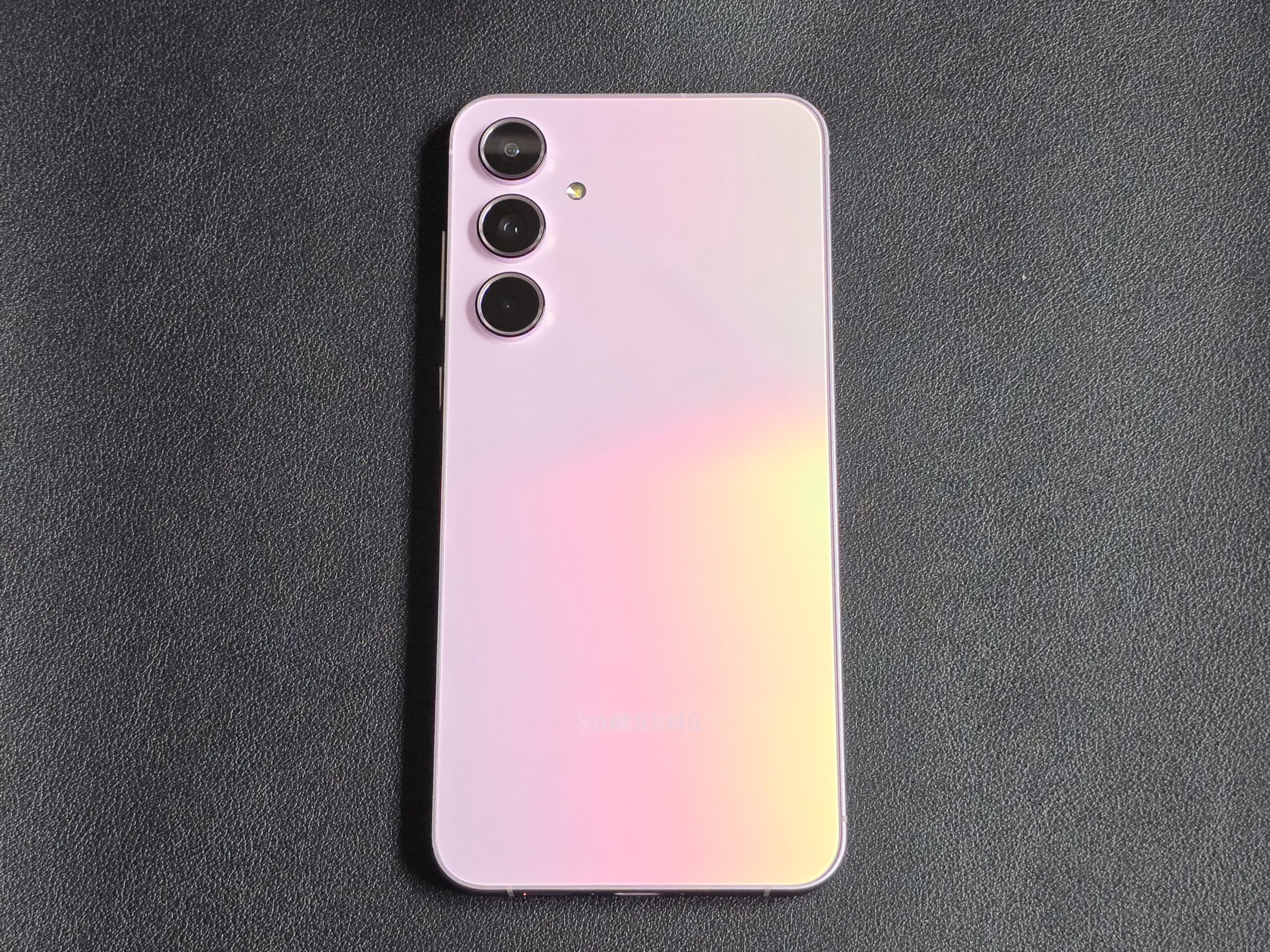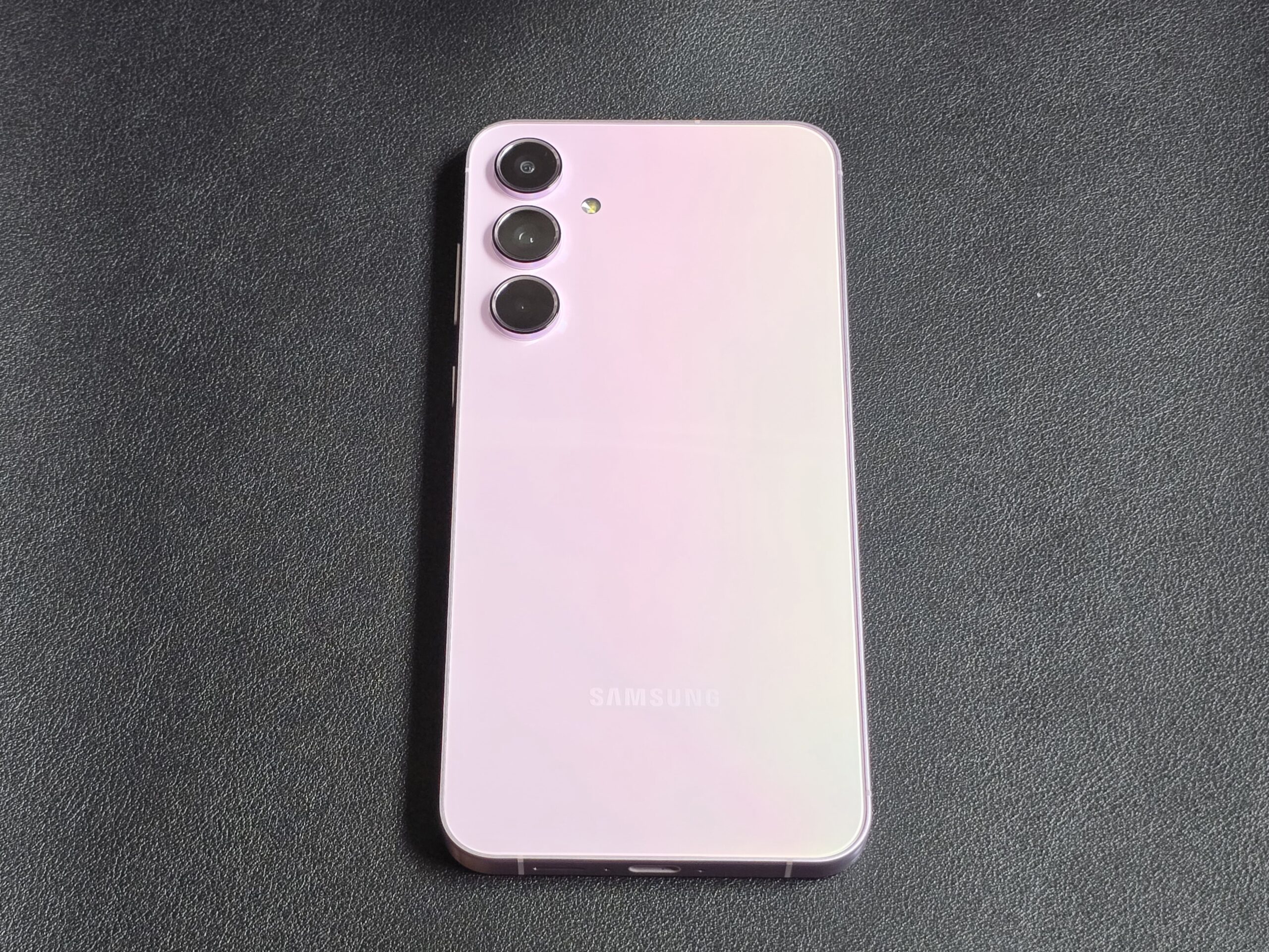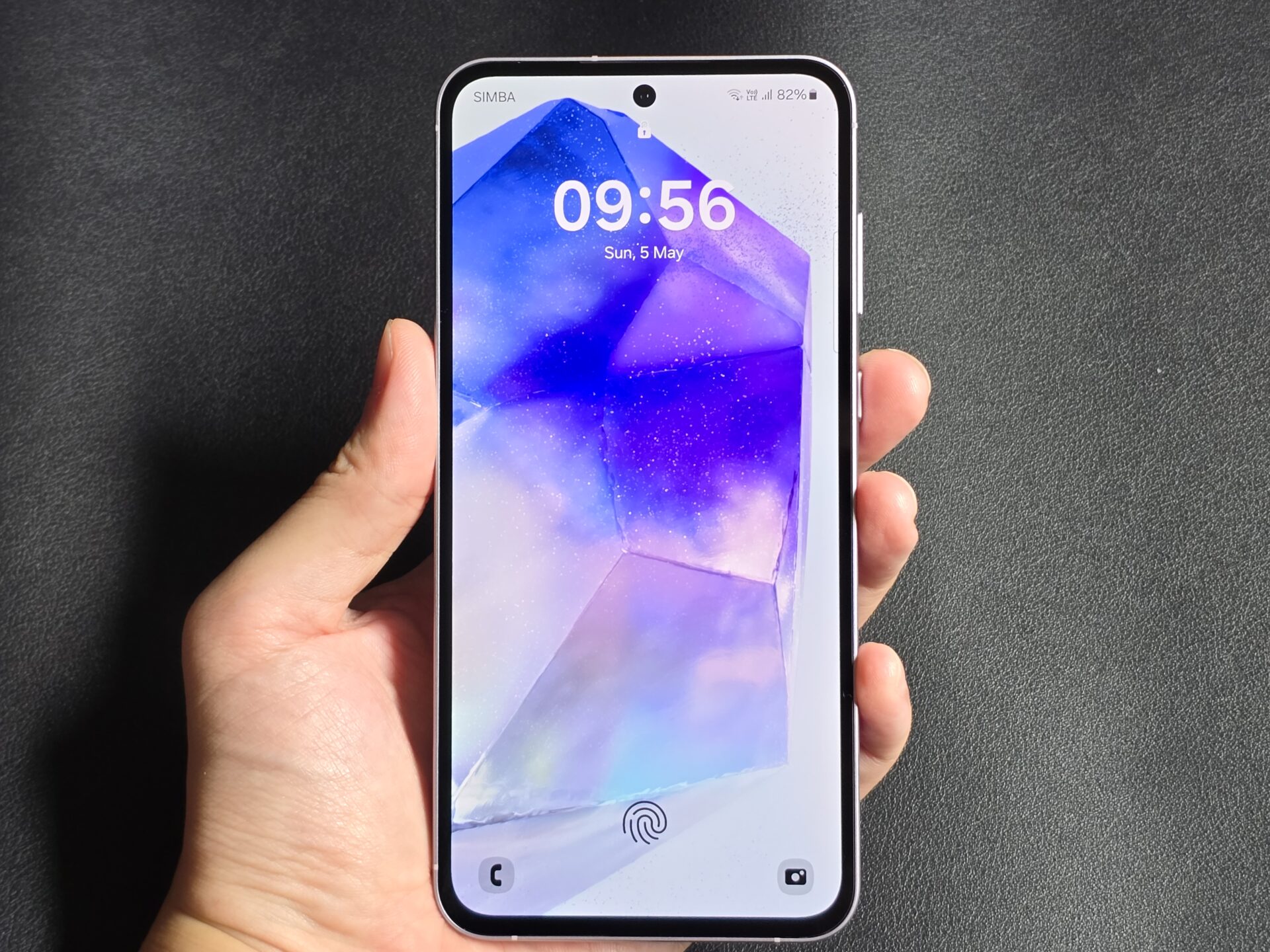
Samsung may get all the attention when it launches its flagship Galaxy S phones each year but nicely bumping up its sales numbers are its less heralded but just as important A series phones, such as the new Galaxy A55.
This mid-range line of smartphones has gone from strength to strength, even as as other phone makers have upped their game at the S$500 price range in recent years.
Now, the Galaxy A55 leads the A series with IP67 water and dust protection plus an attractive and handy aluminium body. Many midrange phones do without ingress protection on a plastic shell.
On the new Samsung phone, there is also a decent ultrawide camera to go with its main shooter. It is powered by a mid-range Exynos chip for a recommended retail price of S$618.
Design
What’s notable in the design is the addition of cutting-edge Gorilla Glass Victus+ protection to the display glass. Gorilla Glass of undisclosed vintage is used to protect the glass back, though – acceptable at the mid-range, but you may want to get a case, still.
While the four corners of the display and sides are nicely rounded, the edges between the screen, aluminium middle frame and the rear glass back are not. This tends to cut into the flesh of my palms – A distraction from my enjoyment of the premium construction.
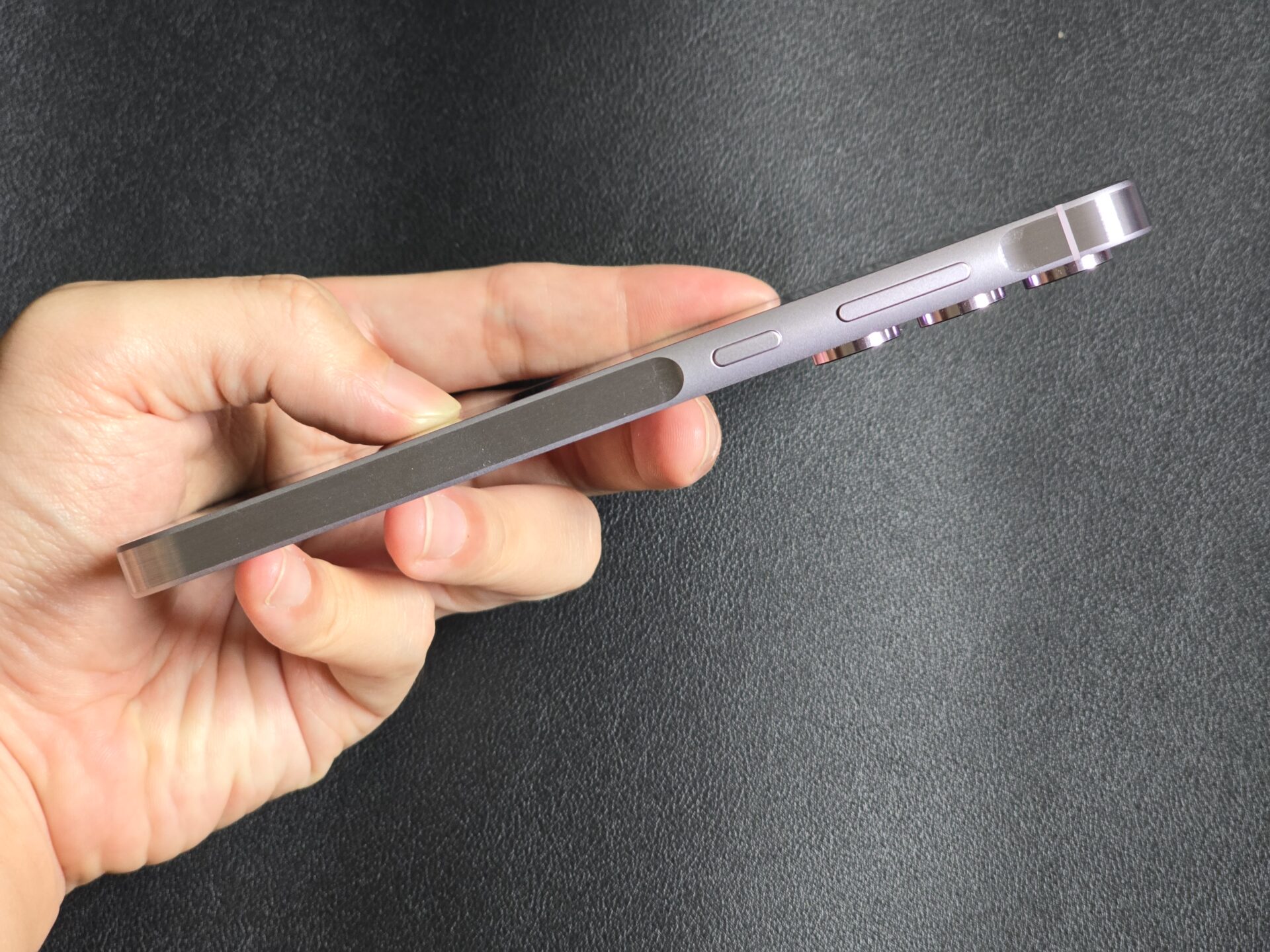
I am not a fan of the glossy back as it can be slippery and attract fingerprints. Thankfully, the middle frame is matte. At 161.1 x 77.4 x 8.2 mm and weighing 213 grams, the Galaxy A55 has a size and profile that is similar to the basic Samsung Galaxy S24.
Screen
The new Samsung phone uses a 6.6-inch Super AMOLED panel that has a Full HD resolution with 1,080 x 2,340 pixels. It has a 19.5:9 display aspect ratio that is average-to-slightly-wide by today’s standards. The screen is ever so slightly larger than the 6.4-incher on last year’s Galaxy A54.
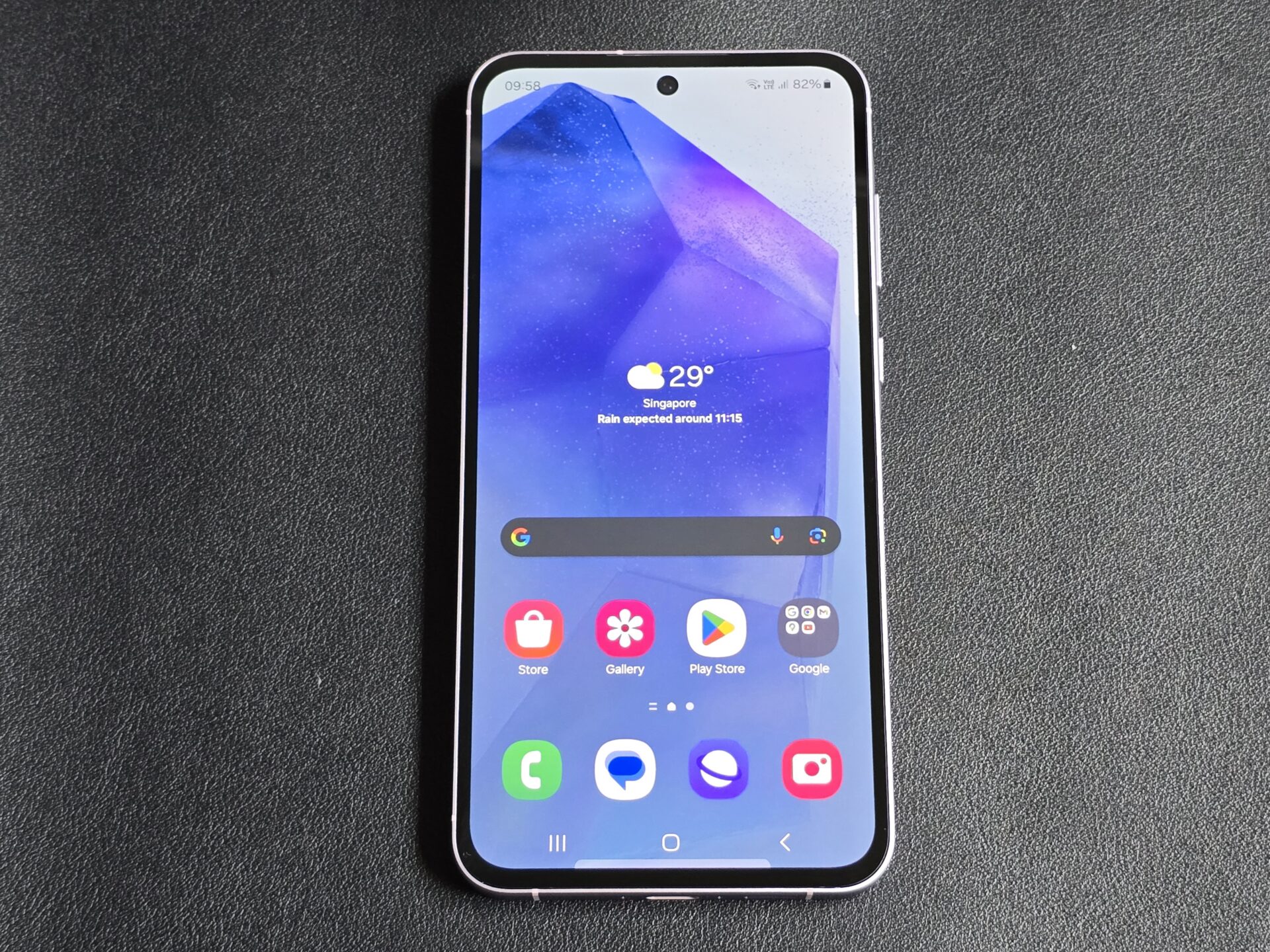
I always appreciate a fully flat front and display instead of sloped edges. Does this make the bezels of the display obvious? That’s possible but it is all an illusion anyway, and the curvy sides usually make the phone less pleasant to hold with their sharper edges.
The maximum rated brightness of the display tops out at 1,000 nits. In my tests, the display maxed out at 900 nits when I pushed the brightness slider to the maximum, and 1,700 nits with adaptive brightness running under direct sunlight. Legibility is thus visibly better with adaptive brightness on, in my experience.
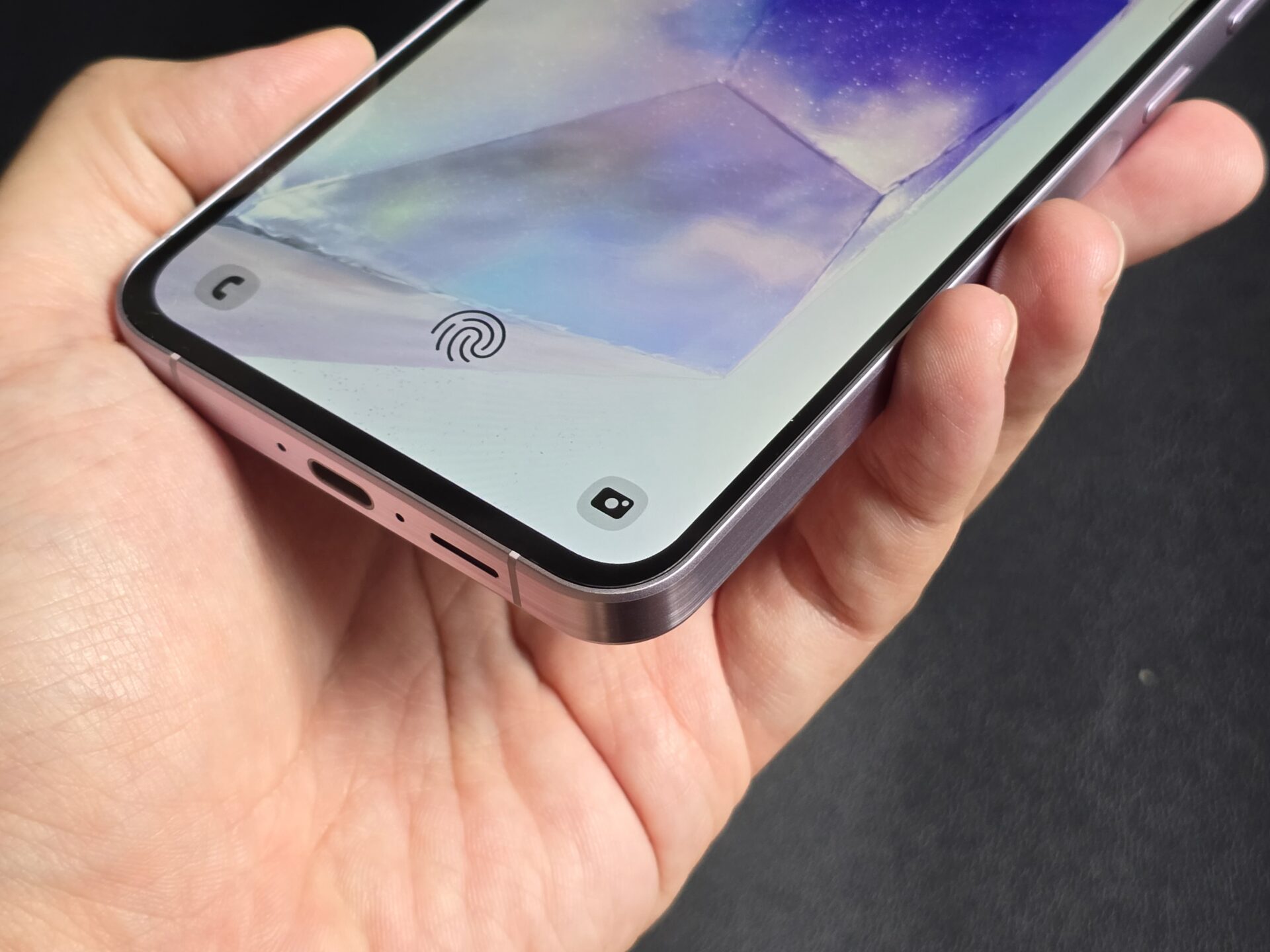
Colour reproduction and viewing angles are comparable to flagships. So, that’s a big plus for value-for-money buyers.
Refresh rates are decently dynamic in my tests. The display would remain at 60Hz across social media apps, games, YouTube and productivity tools, and activate 120Hz only when I interacted with the screen.
Okay, that’s not as dynamic as some of the other displays out there, but I am happy enough the display is able to default to 60Hz nearly all the time when idle. That helps save on battery usage.
Performance
For performance, the Galaxy A55 comes with a mid-range Exynos 1480 chip, paired with an Eclipse 530 processor. From what I could gather, the Exynos chip’s performance is comparable to Qualcomm’s mid-range Snapdragon 7 Gen 3 core.
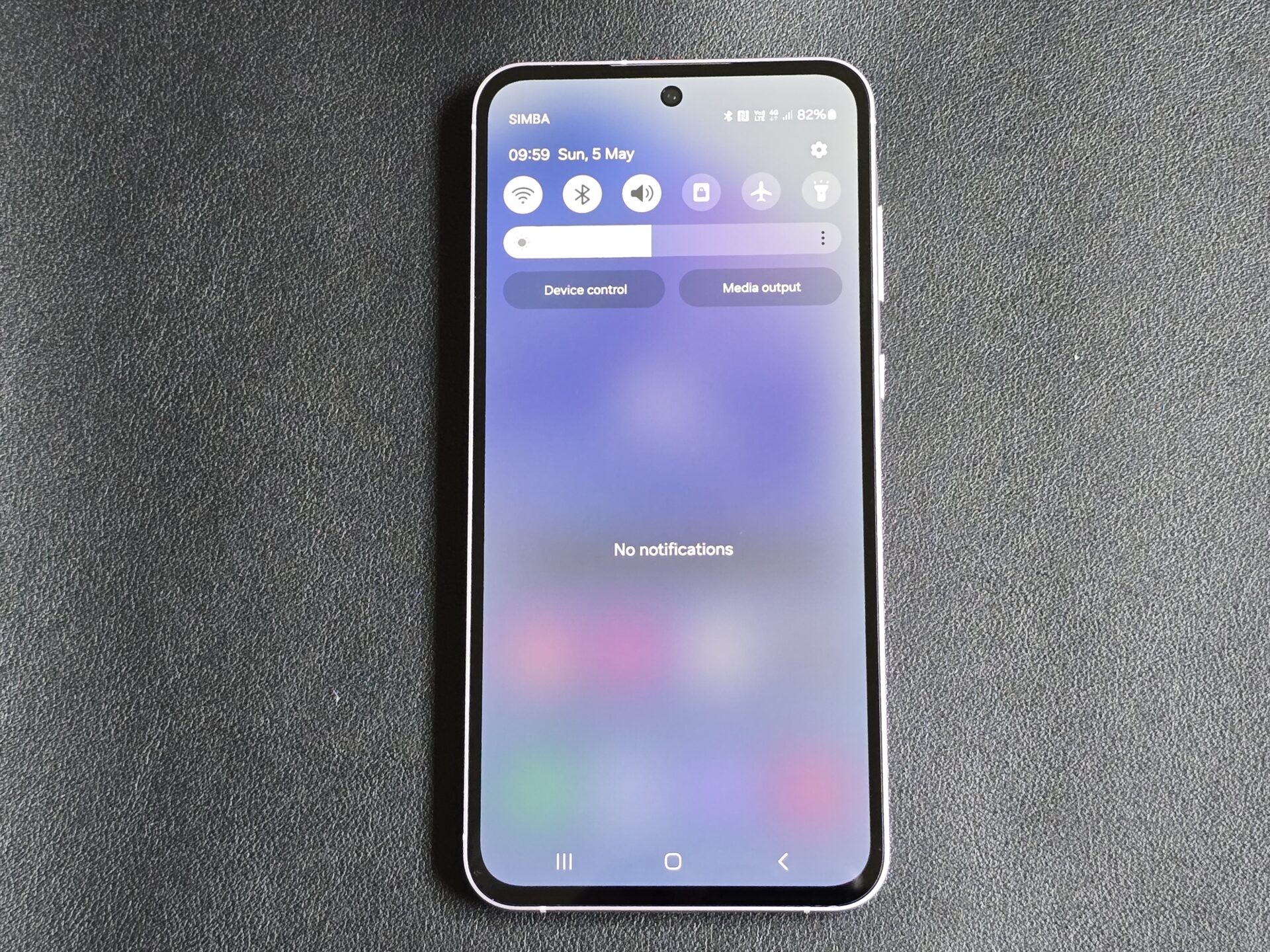
I used PCMark 10 for Android’s Work 3.0 Professional to simulate day-to-day performance workloads like browsing the Web, editing photos and videos, and writing and manipulating data. The score averaged 13,300, a respectable performance.
3DMark for Android tests the device’s handling of commonly used game rendering engines. The Wild Life Extreme benchmark, in my tests, averaged 5 frames per second and clocking a score of just 930 over three runs on the Galaxy A55.
Clearly, this is not the phone to use for playing the latest games at the highest settings. The Wild Life test, which recreates more realistic demands of games on phones, clocked a much more respectable score of 3,950 with average framerate of 24fps.
That does not mean the A55 cannot handle games. I was able to play Asphalt 9: Legends with smooth cutscenes and gameplay. The building textures are less refined and anti-aliasing less pronounced than pricier competitors, but these things do not detract from gameplay, generally speaking.
Features and battery
Notably, Samsung has adopted a very similar playbook in design, no matter if it’s a Galaxy S or Galaxy A phone. There is a conventional SIM card tray which holds two SIM cards and no microSD card. Yes, you need a pin to slot in your SIM card.
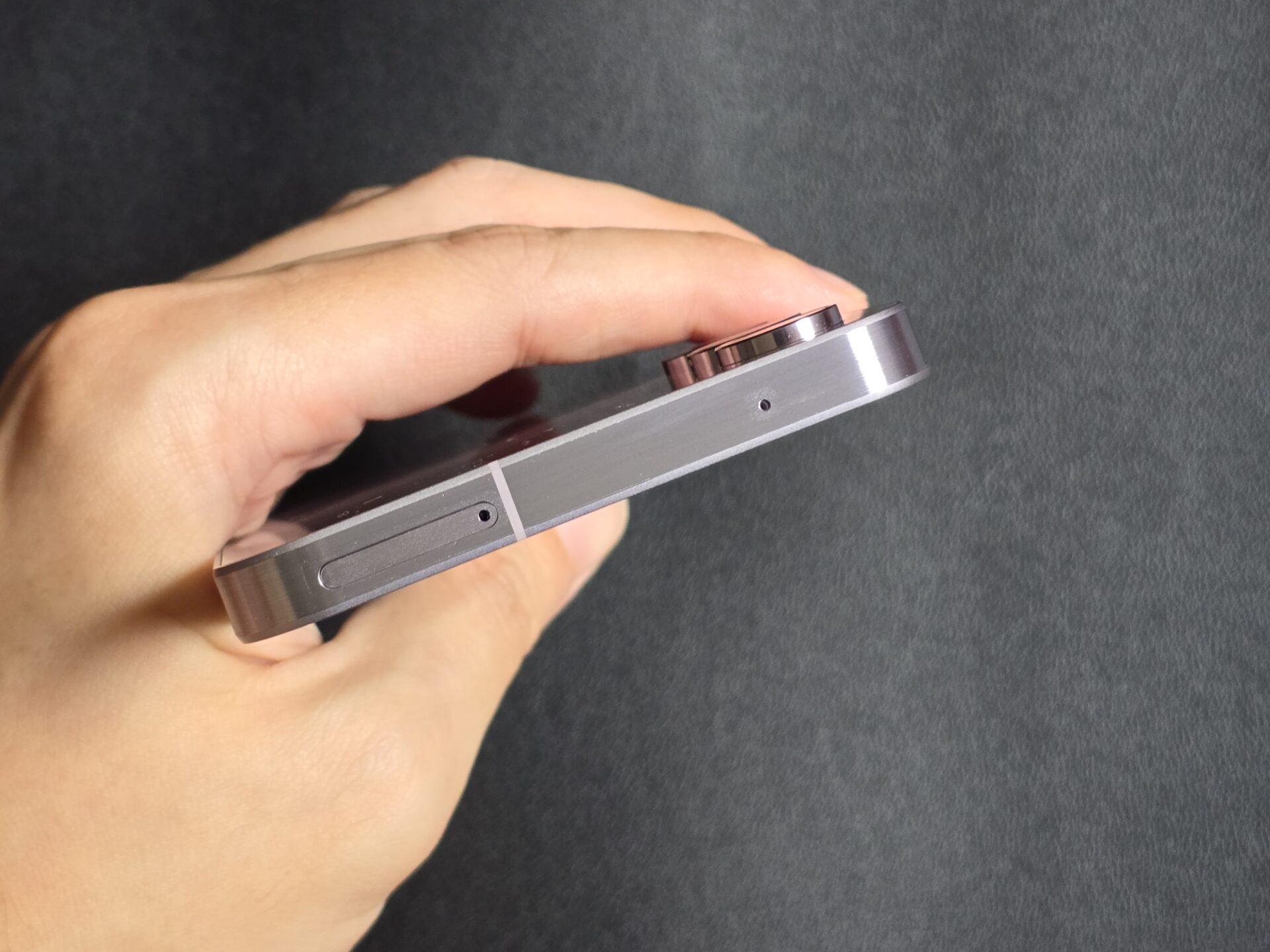
The bottom speakers share the lower rail with the SIM card tray, instead of mirroring the top speaker built into the speakerphone piece sitting up top of the device for calls. The sound was loud, crisp and not unbalanced or anything, just a curiously unchanged quirk over years.
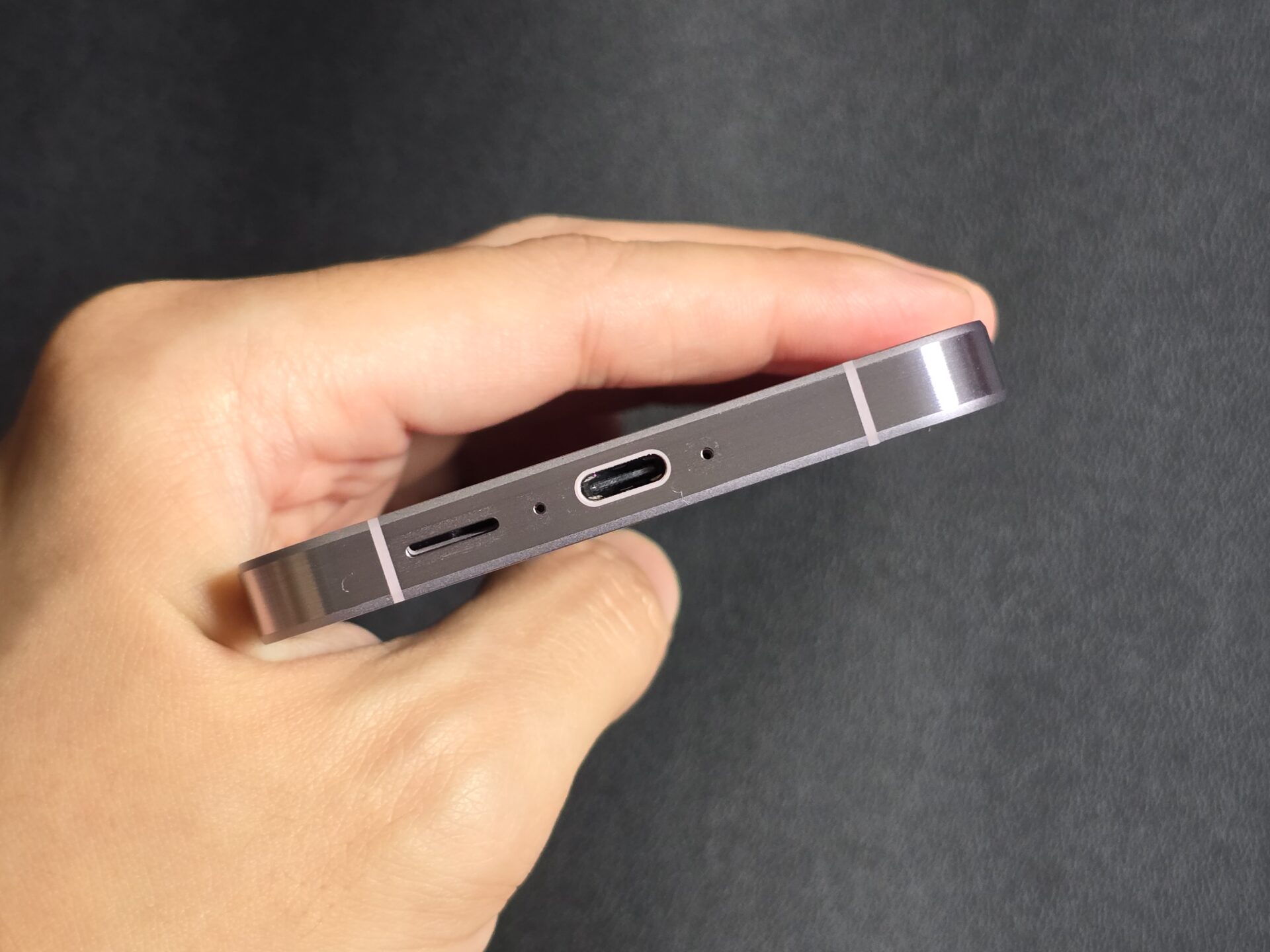
The fingerprint sensor is built onto the lowest decile of the display. The position is a little low to reach comfortably when gripped with one hand. It is not inaccurate, but I would be lying if I do not mention there were failed reads throughout my tests, even if not debilitatingly so.
The Galaxy A55 is IP67 rated for dust and water resistance, at 1m depth for up to 30 minutes. This is competent ingress protection for a mid-range model. So, no worries for a jog or chilling by the poolside.
The phone features the same 5,000mAh lithium polymer cell as its predecessors. I ran the PCMark 10 for Android’s Work 3.0 Battery Life test with Wi-Fi, 4G connectivity, and dynamic display refresh on throughout. The device lasted 13 hours and 20 minutes. Very decent, even if it is no battery king.
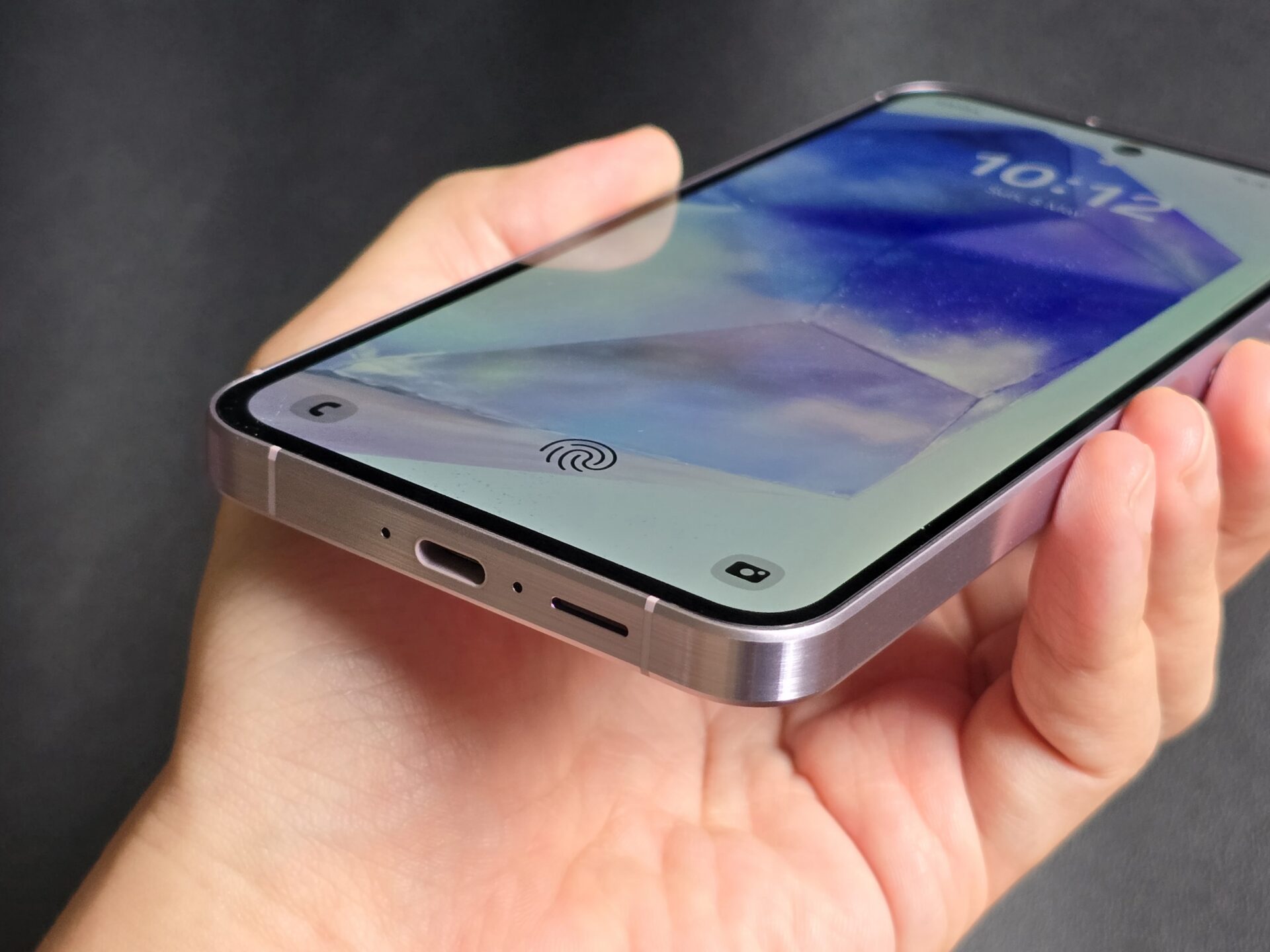
The Galaxy A55 supports 25W wired charging on the USB Power Delivery 3 standard and includes a USB-C cable, but has no bundled charger. A charging speed upgrade is probably due soon, given how 45W is already available on a lower-priced Nothing Phone (2a).
Cameras
The camera set up on the Galaxy A55 is of a standard midrange wide-ultrawide variety, with a small bonus in a functional macro camera. The ultrawide camera here is a 12-megapixel outfit, which makes its shots usable rather than perfunctory.
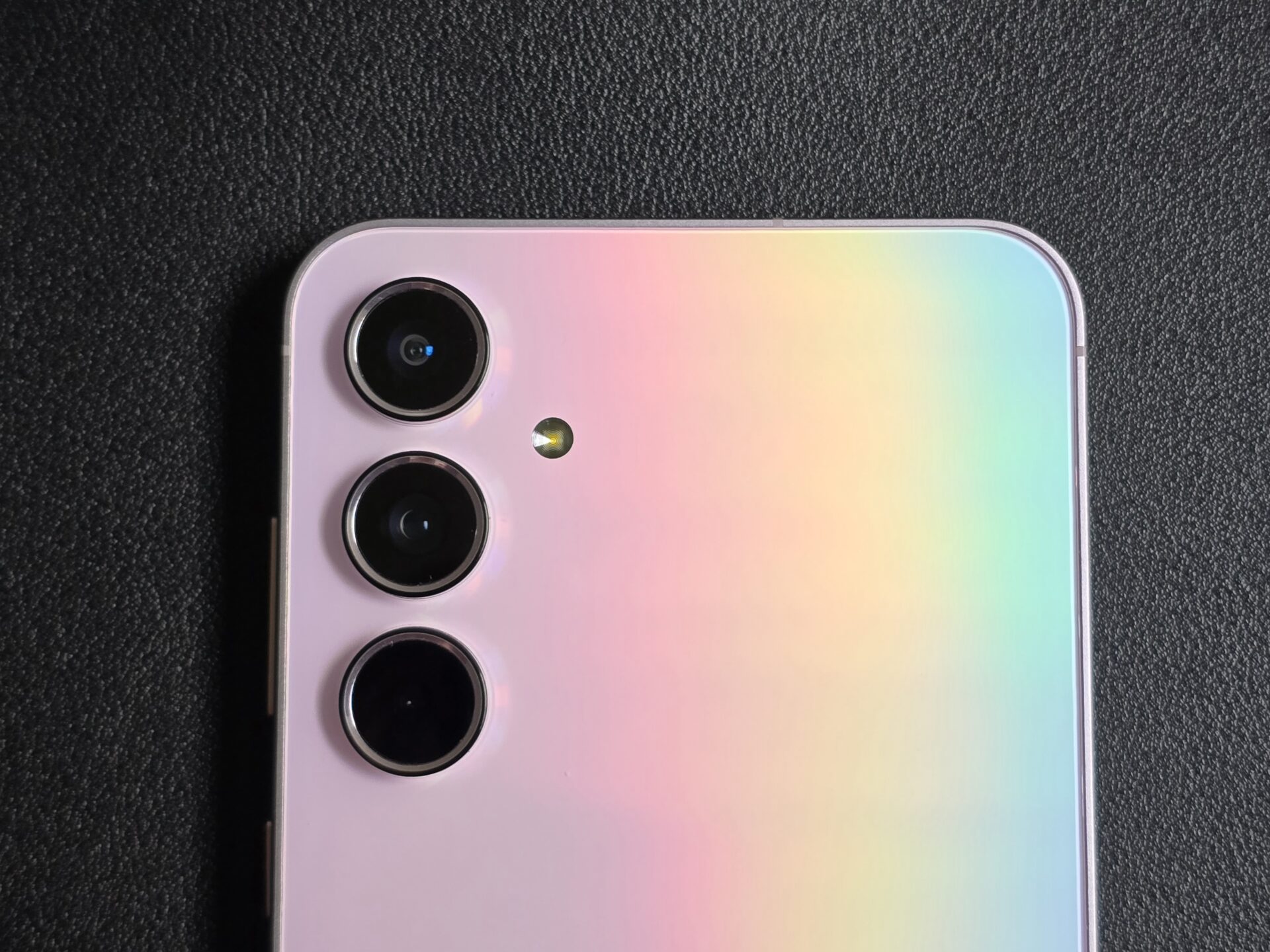
Wide camera – 50 MP, f/1.8, 1/1.56-inch, 1.0µm, PDAF, OIS
Ultrawide camera – 12 MP, f/2.2, 123˚ FOV, 1/3.06-inch, 1.12µm
Macro camera – 5 MP, f/2.4
Selfie camera – 32 MP, f/2.2, 26mm (wide), 1/2.74-inch, 0.8µm
Dark clouds were gathering when I got the day shots on a weekend, but the pictures from the phone turned out darker than the surroundings were, for sure. Nevertheless, pictures from both day and night are good, even if you can just make out the lack of perfect detail in most of them.
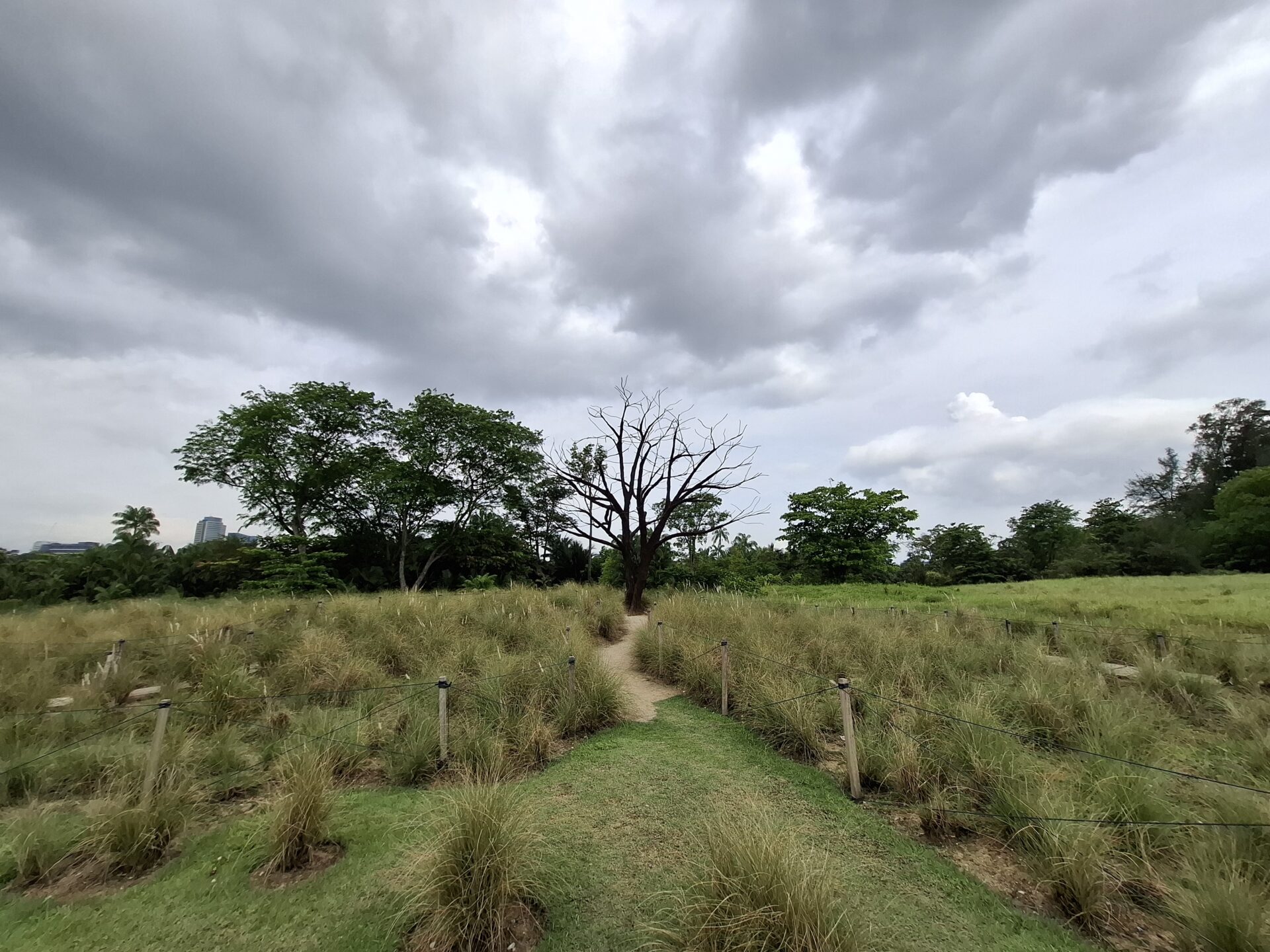
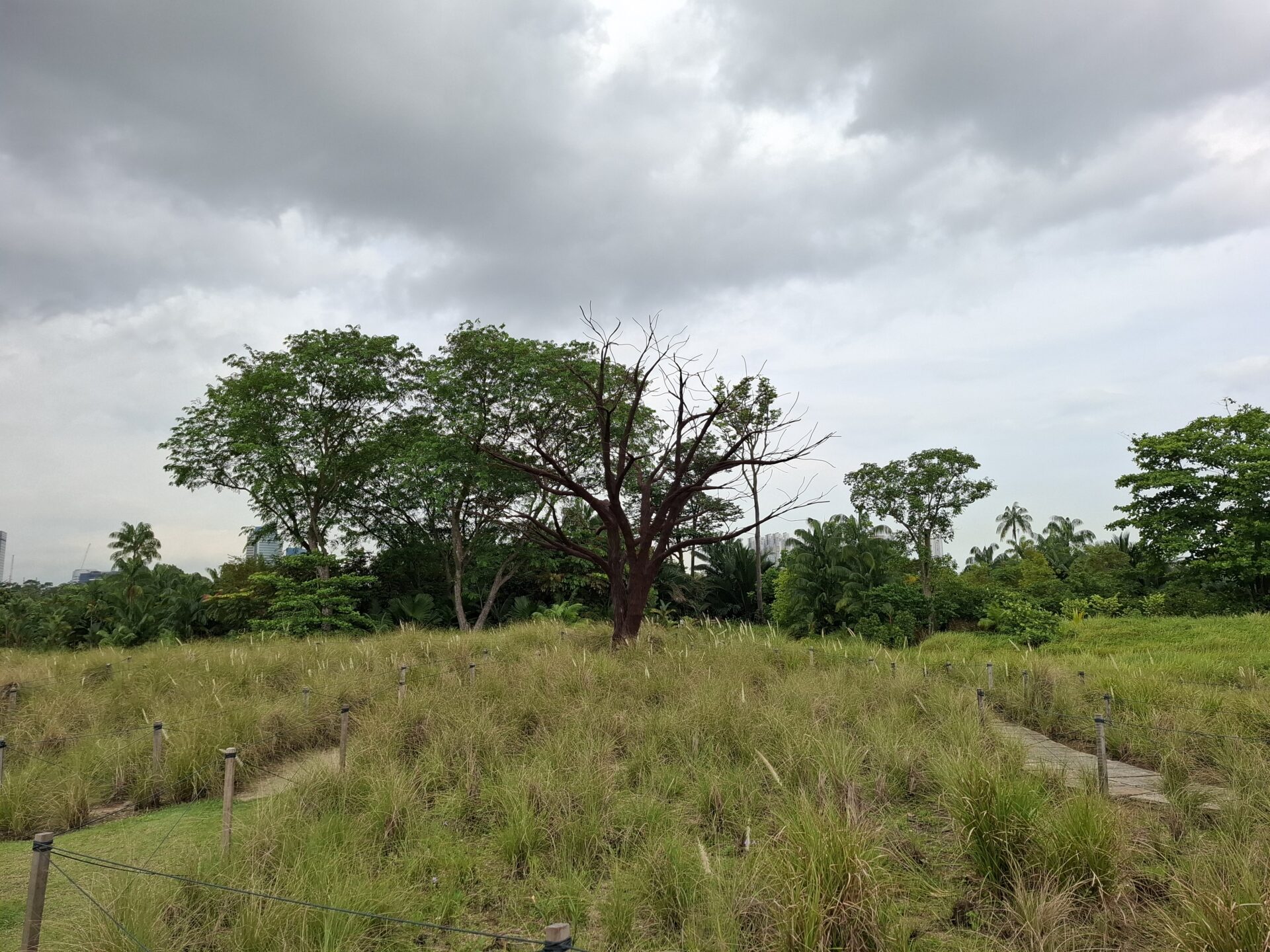
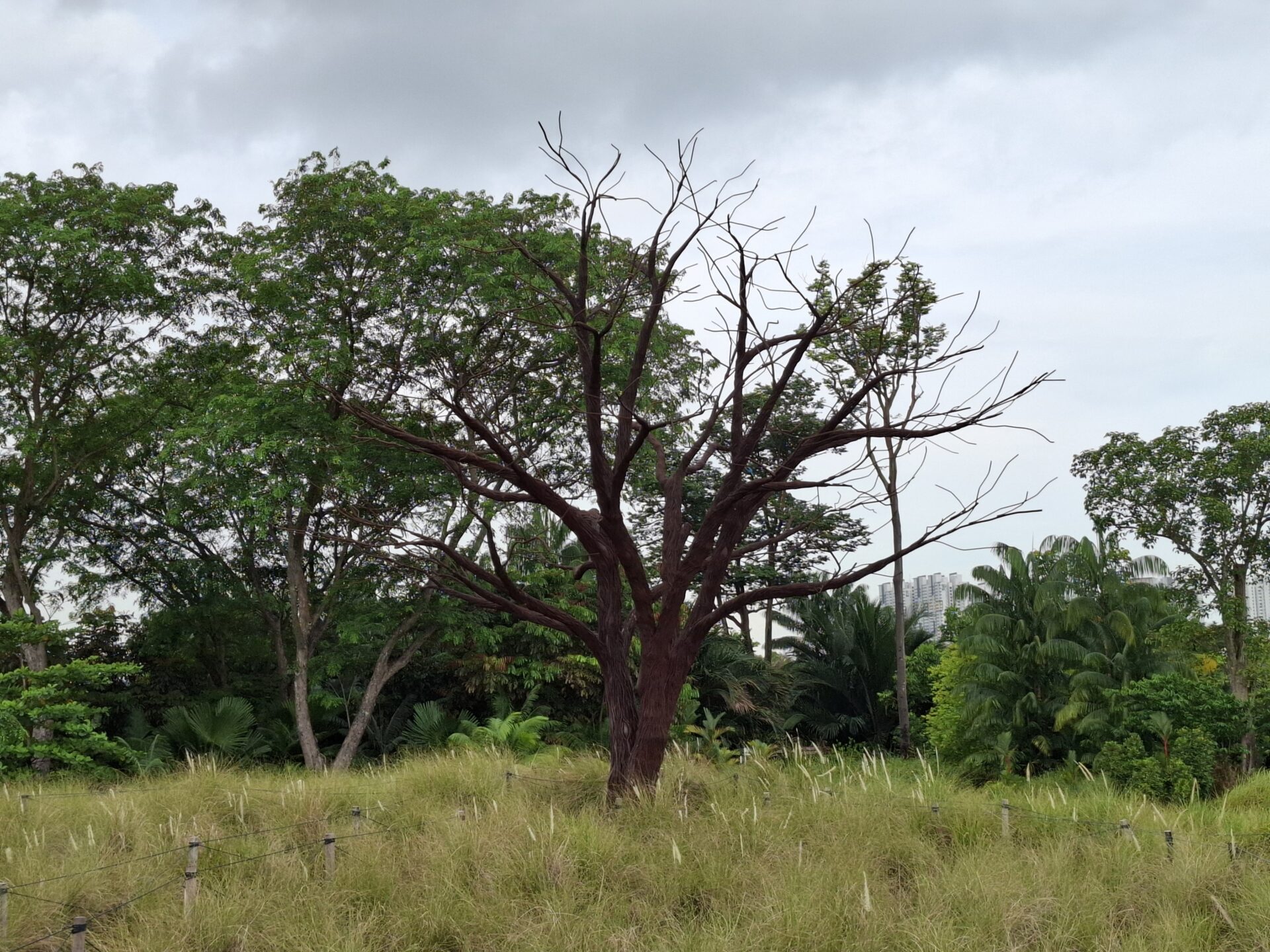
Shots of the Jurong Lake Garden’s Lone Tree exemplify this. The darker brightness balance aside, the ultrawide shot has little purple fringing, but the shrubbery tend to blend together and it can be difficult to make out individual stalks of grass.
On the wide imager, the Lone Tree looks sharper, but it can still be a challenge to make out every vein on the trunk. The 2x digitally cropped shot is okay, but (of course) does little to address the lack of clarity on the shrub.
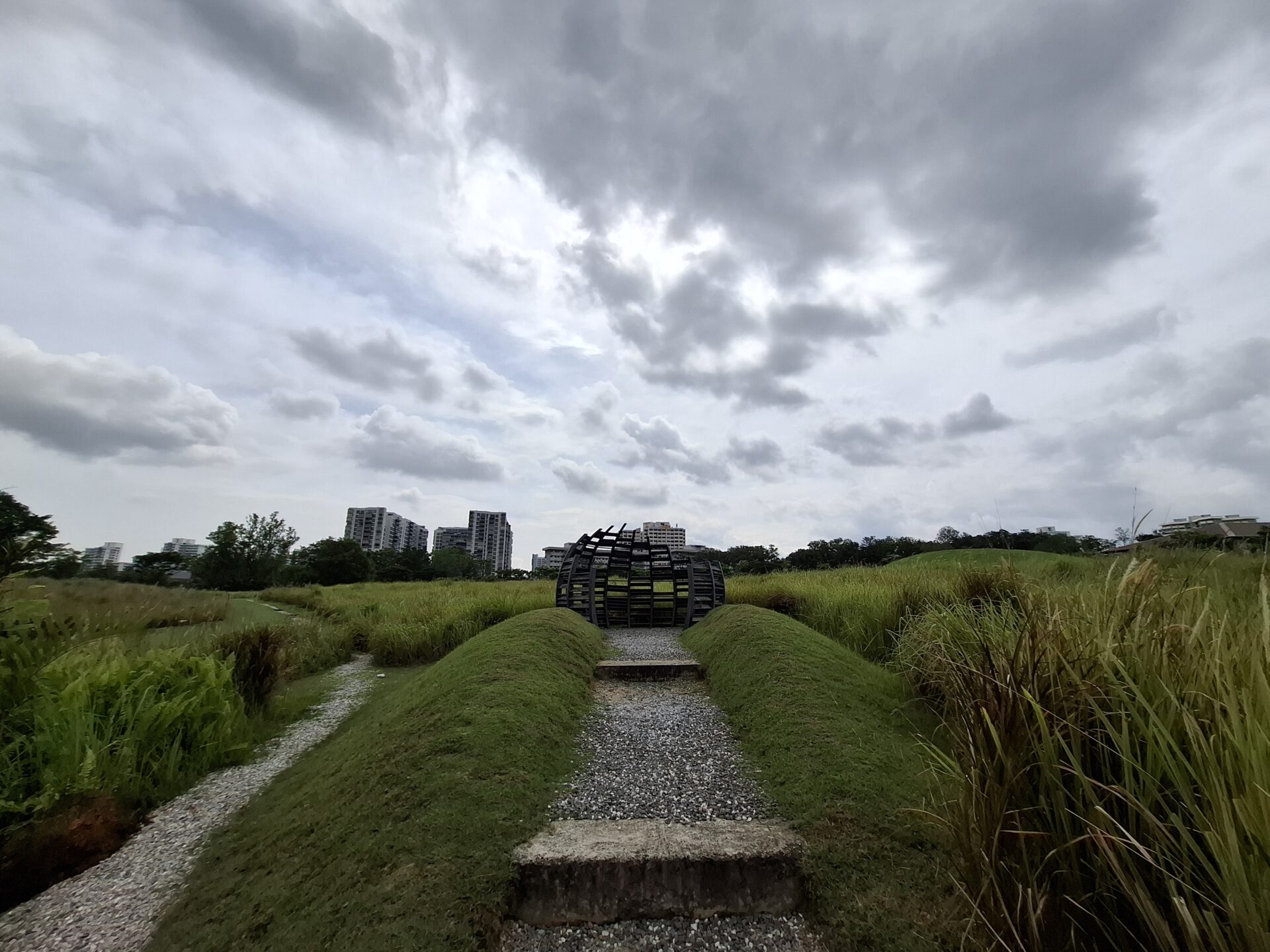
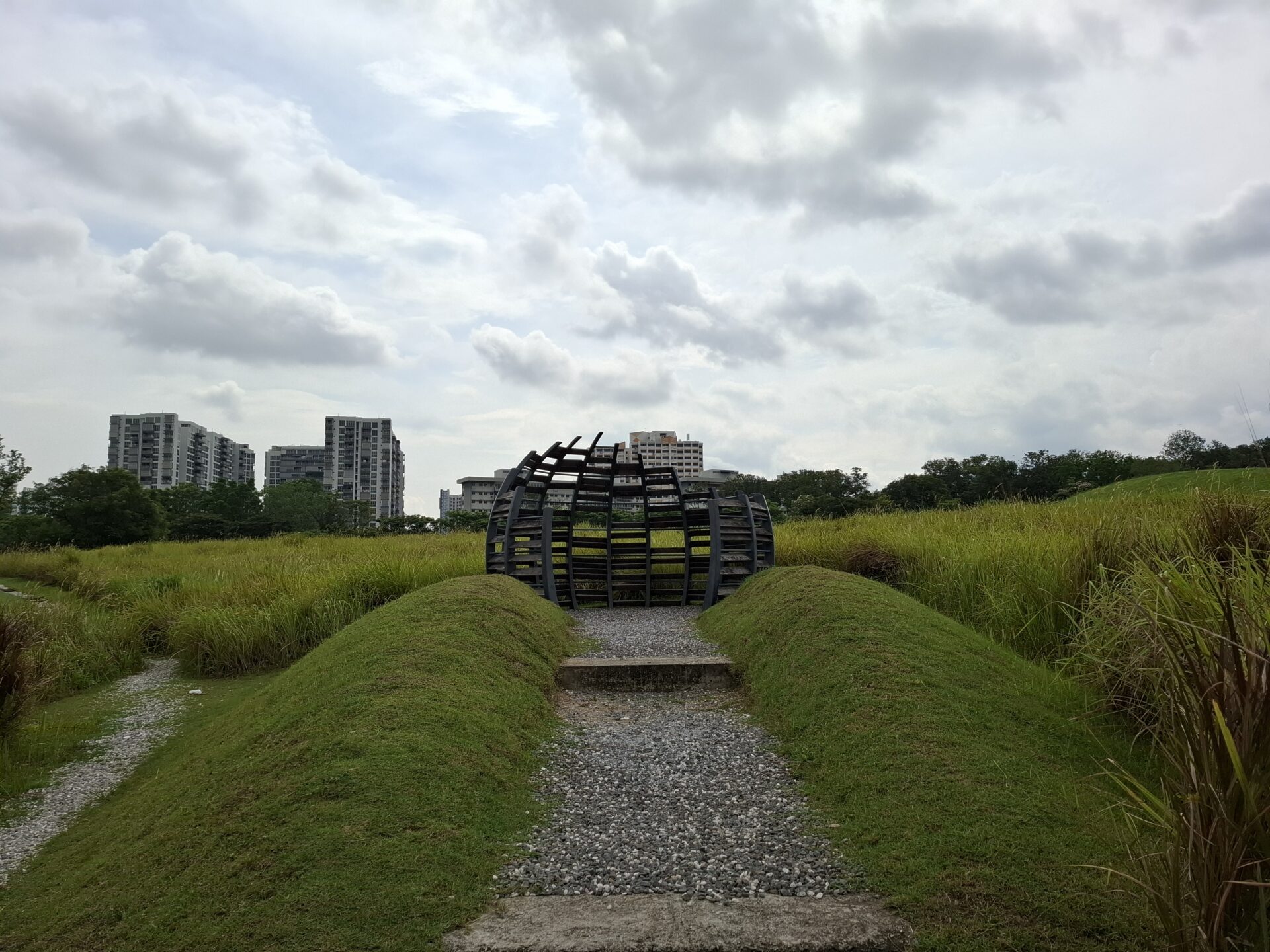
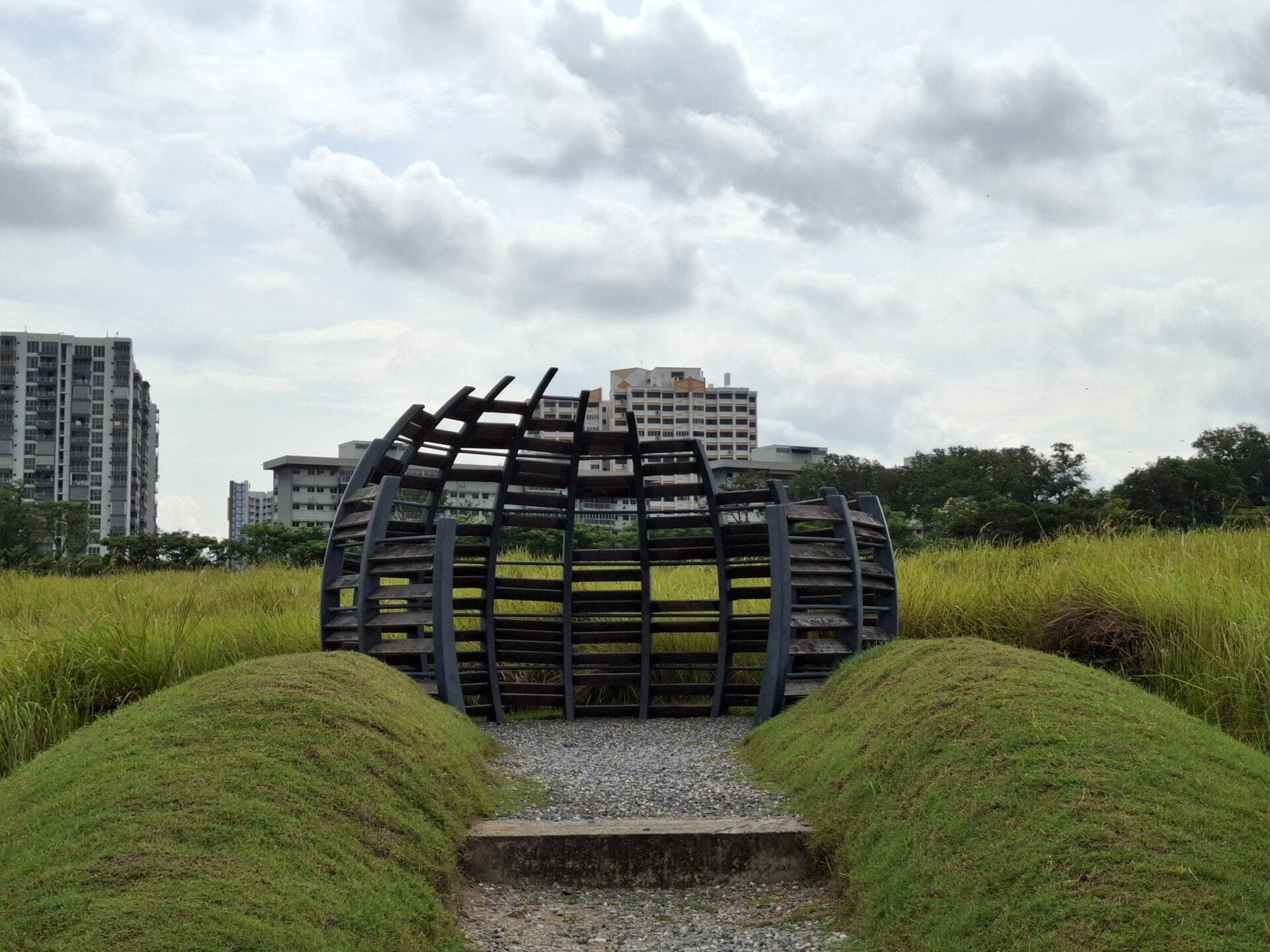
Heading over to the Bird Hide, the same patterns apply. The ultrawide shot is dark and can lack some clarity where the grass patch is, but is overall a clear shot with good colour. The wide shot is comparatively much crisper and of good quality.
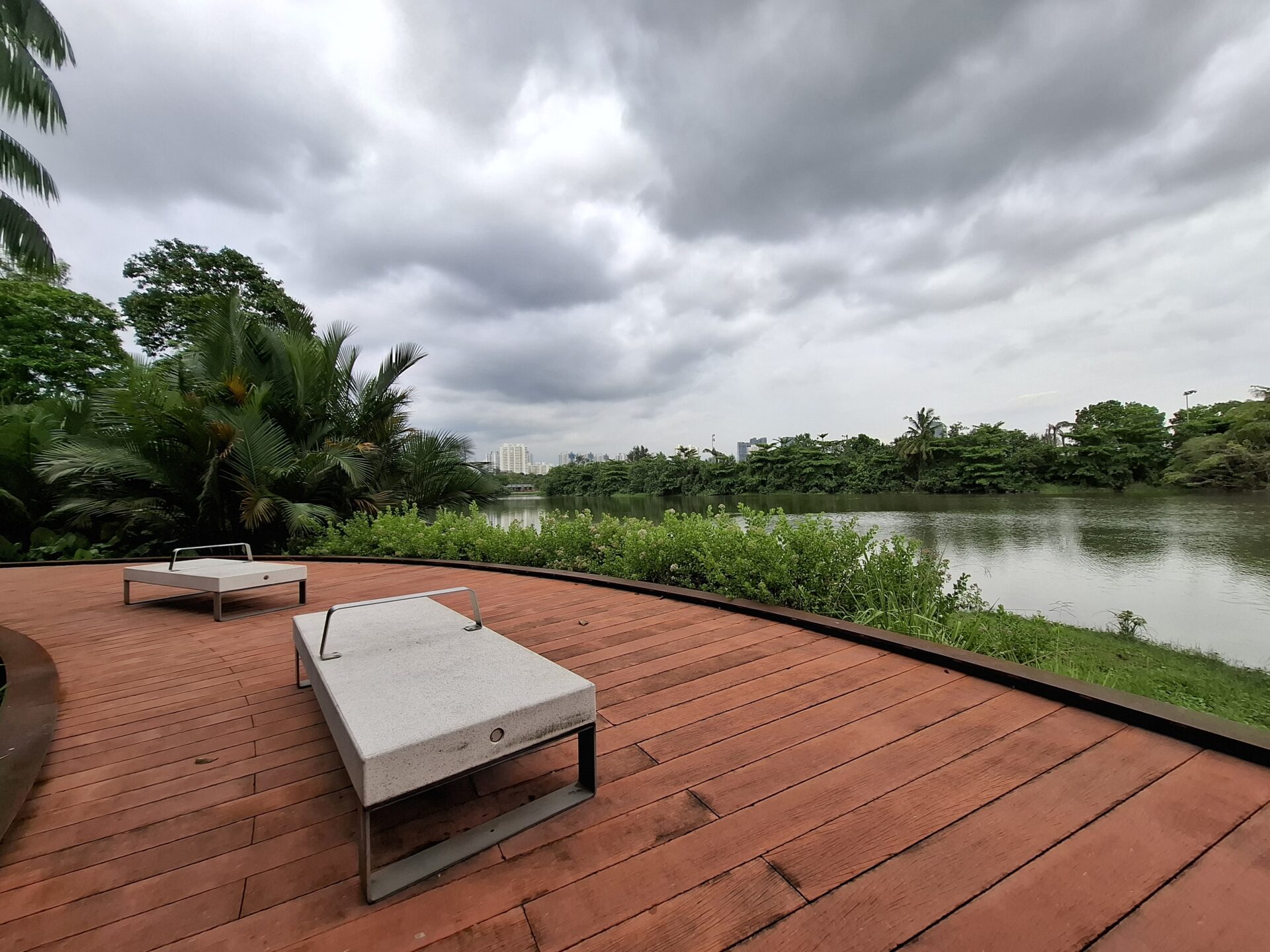
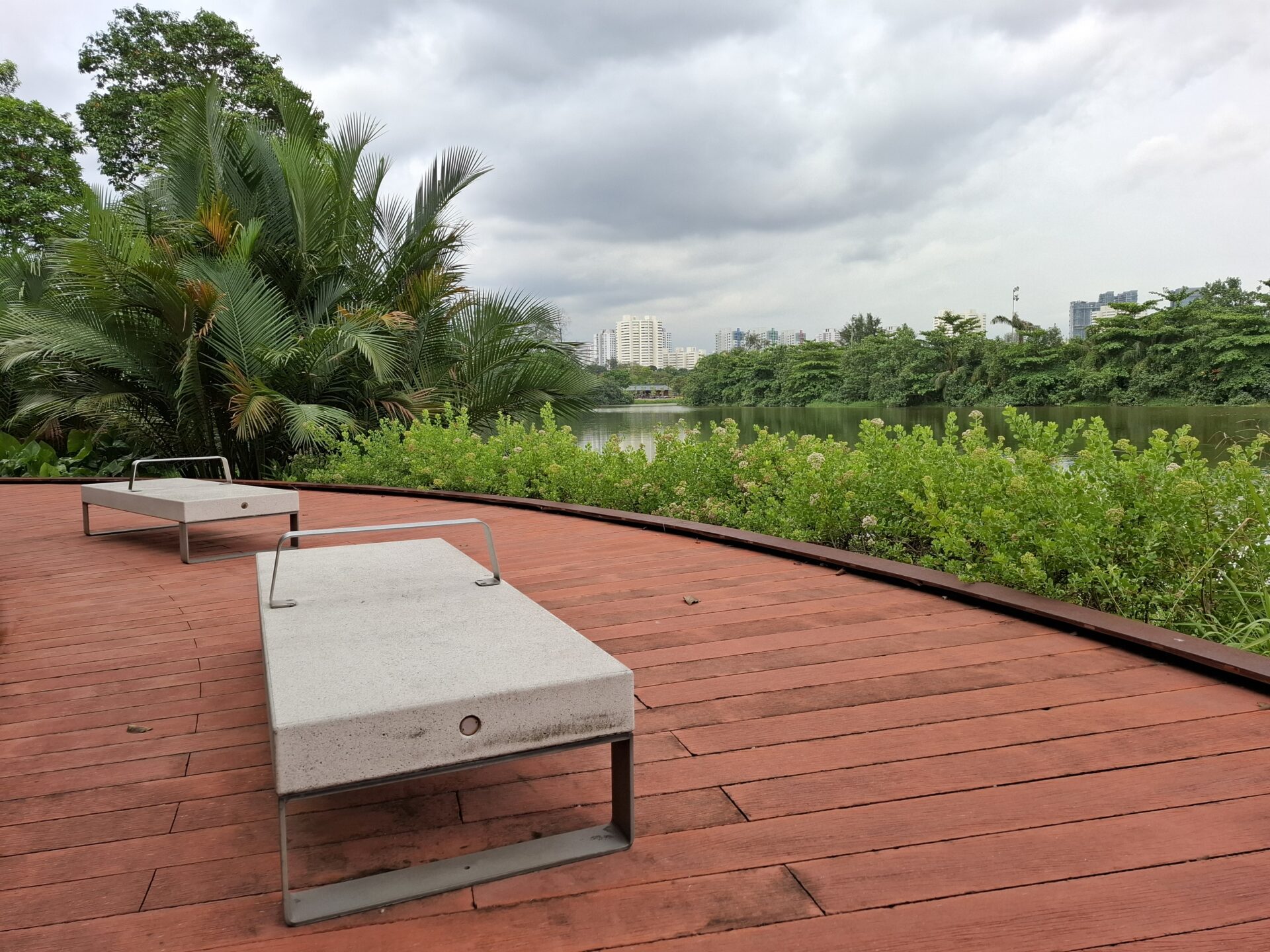
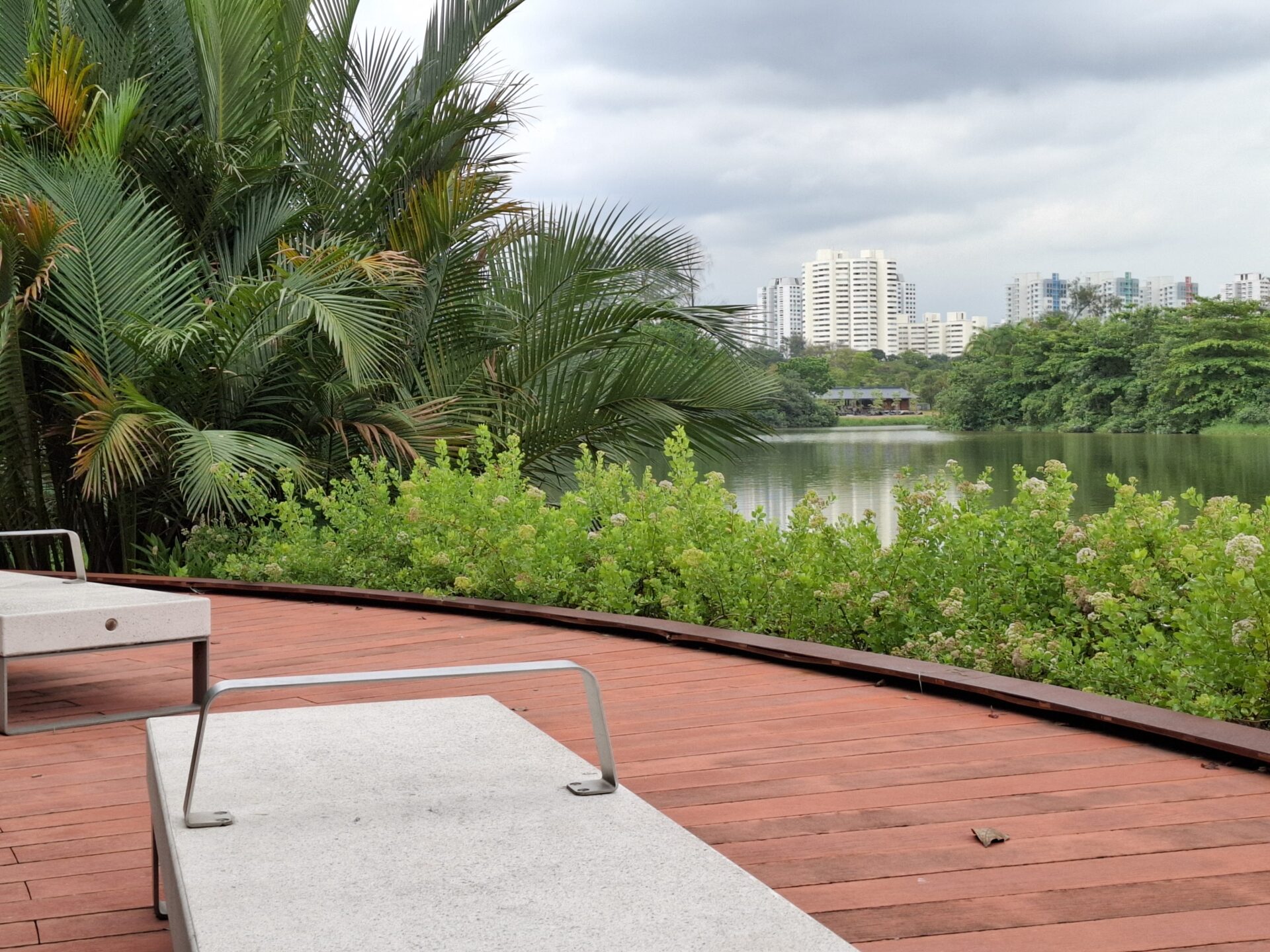
Along Rasau Walk overlooking towards Jurong Lake, the ultrawide shot has less issues with detail on a long-range landscape shot. The wide shot is brighter, with good detail retention on the stone bench and shrubs lining the boardwalk.
A 2x shot allows a closer look at the shrubs, but also makes more obvious some muddiness on the wooden shed on the other end of the lake.
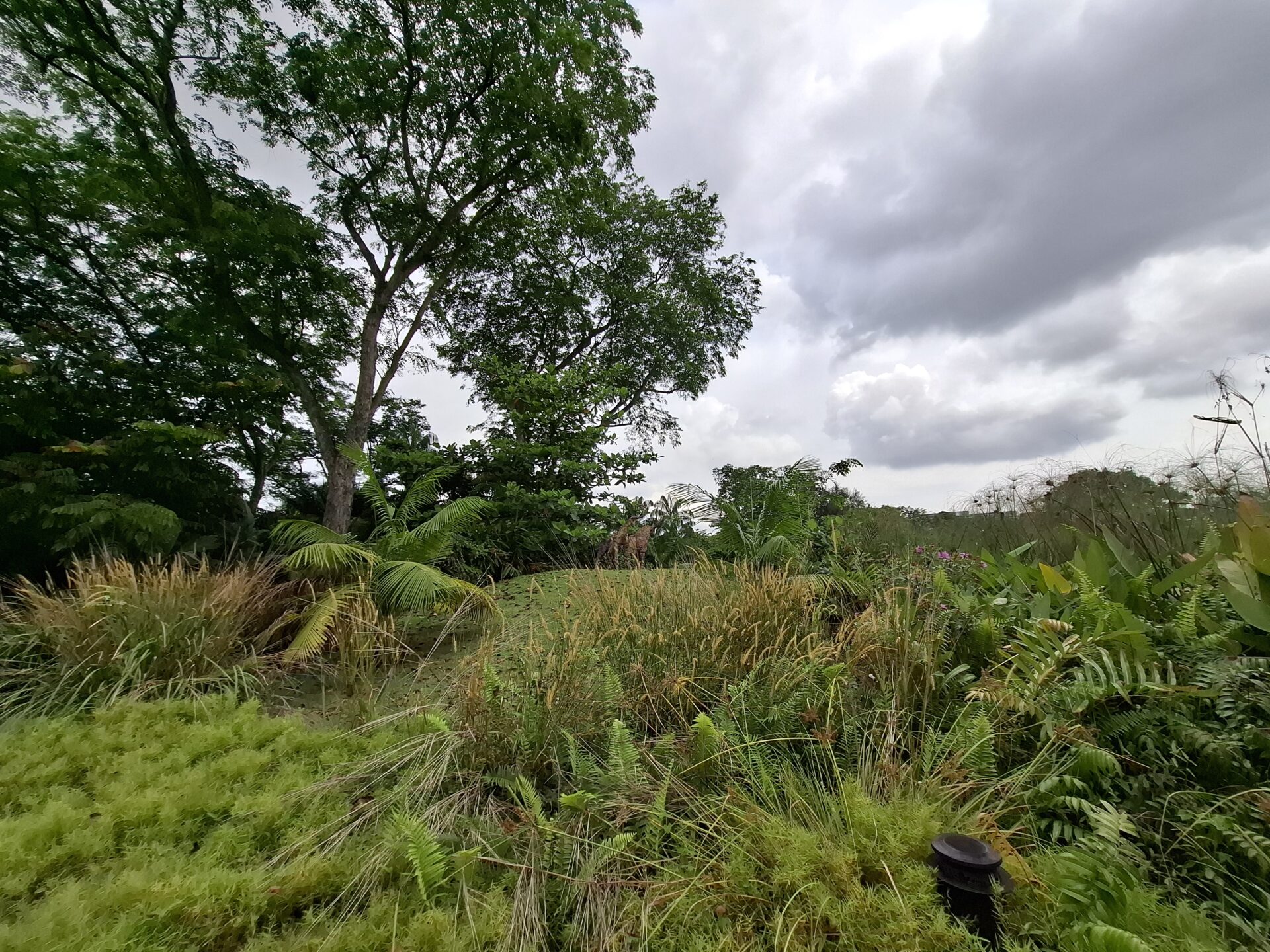
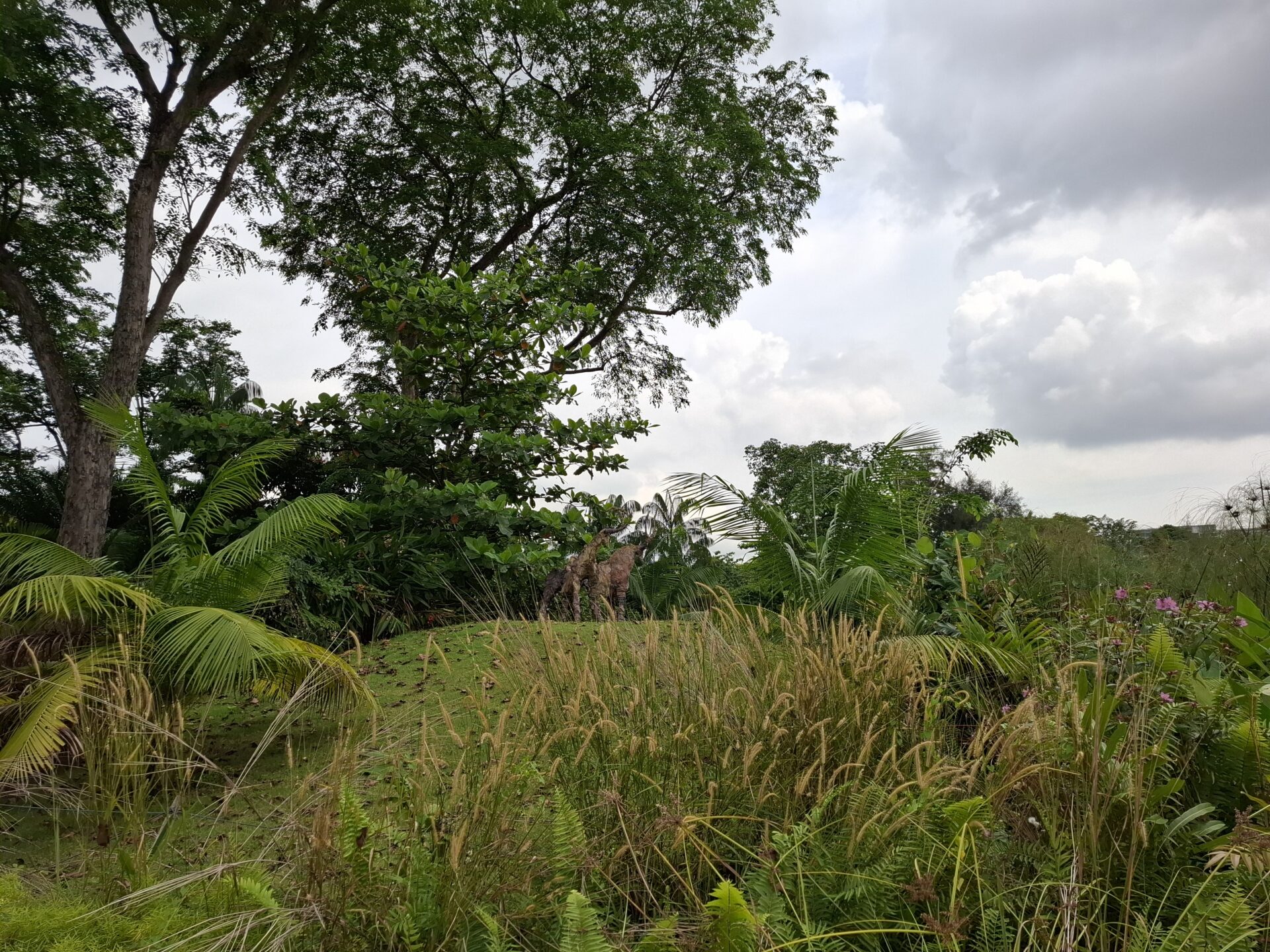

You can also view these shots of a pair of goat sculptures for your own analysis. Like most daytime shots, I wish they all turned out brighter without me having to fine-tune them myself.
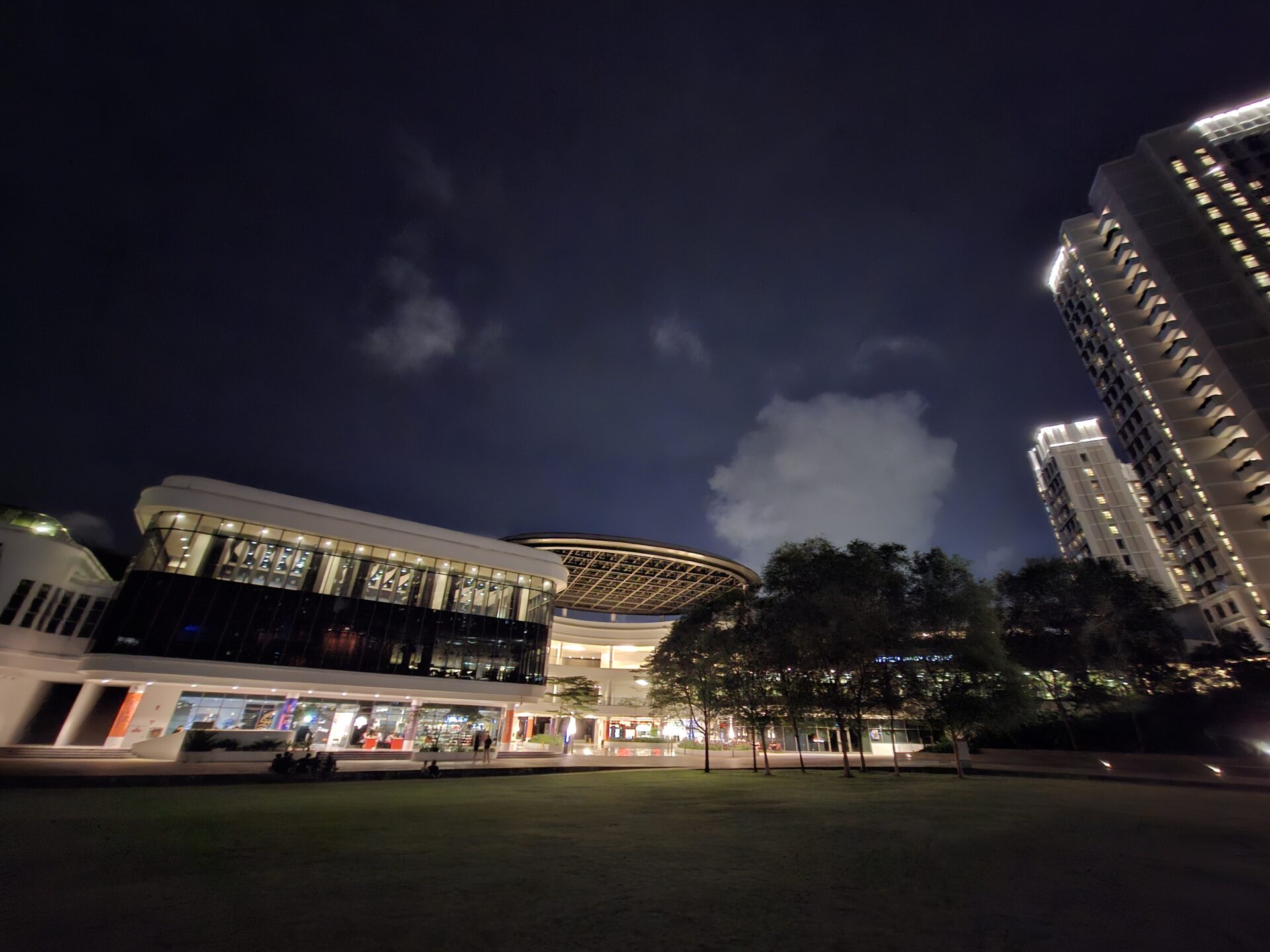
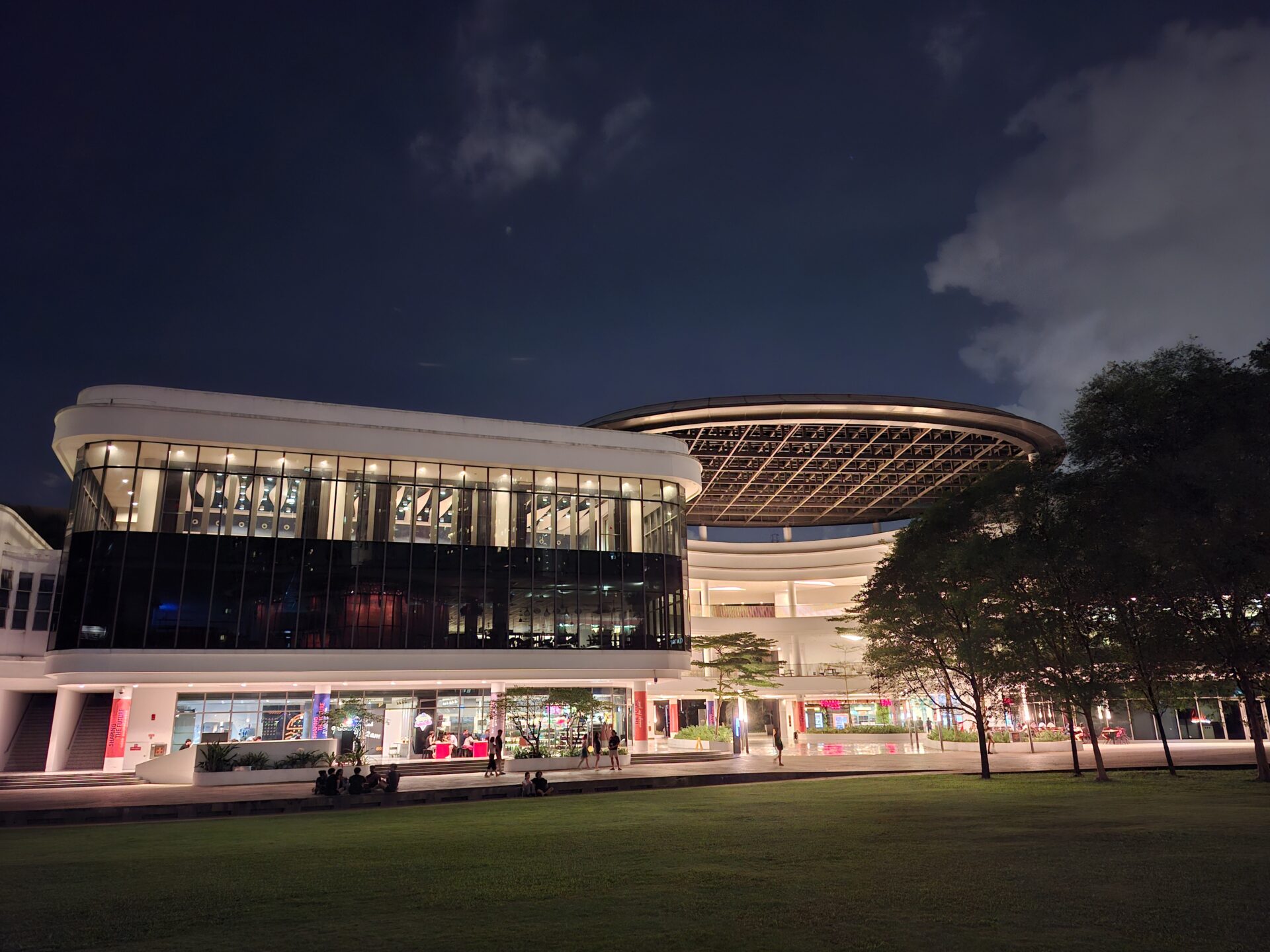
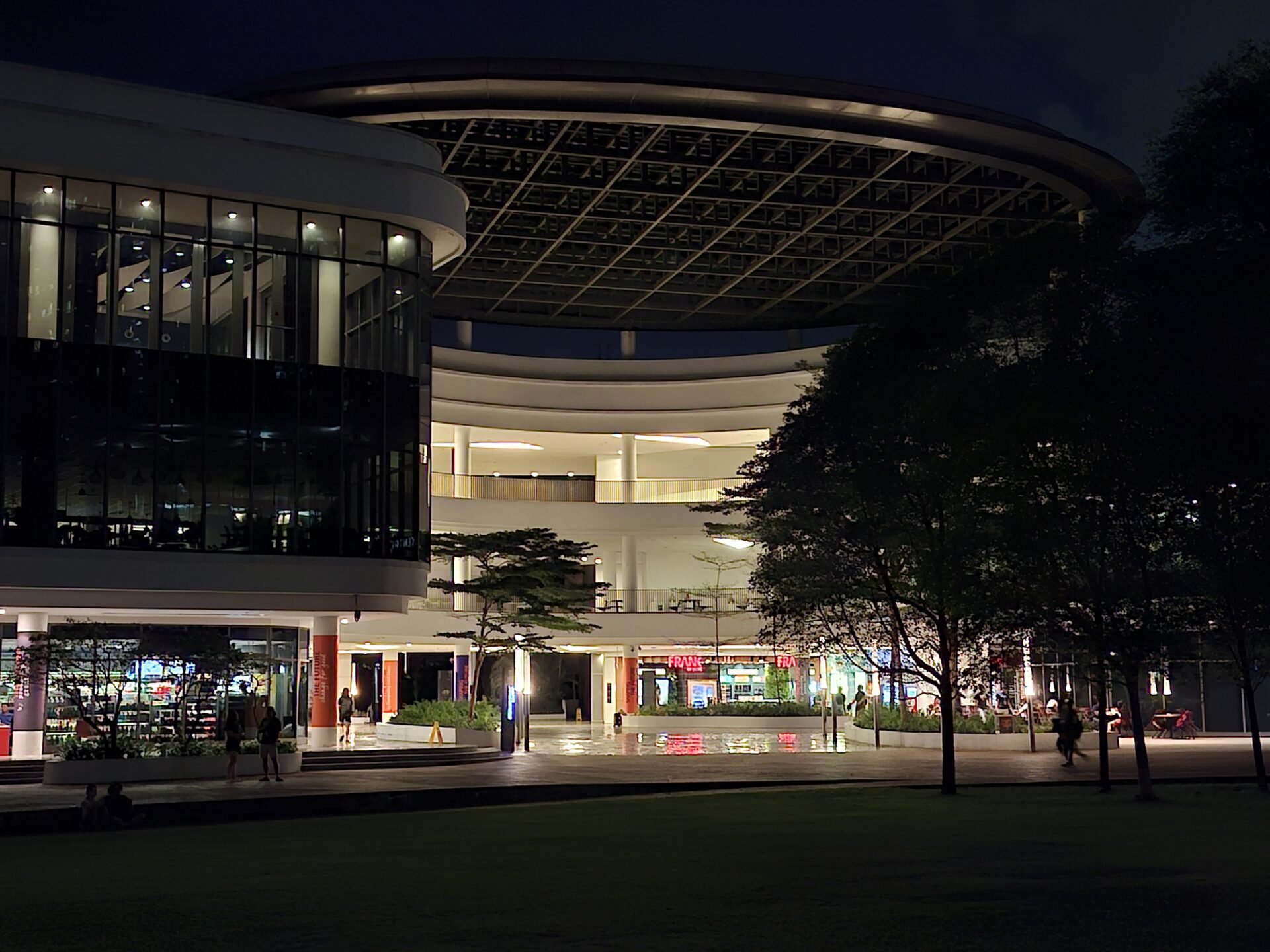
Onto the night shots, the ultrawide shot of the Stephen Riady Centre is dark indeed, which limits the amount of detail I can make out behind the trees and darkened glass. The wide shot makes the areas near and behind the shadows much clearer. A 2x shot at night magnifies the issues with detail.
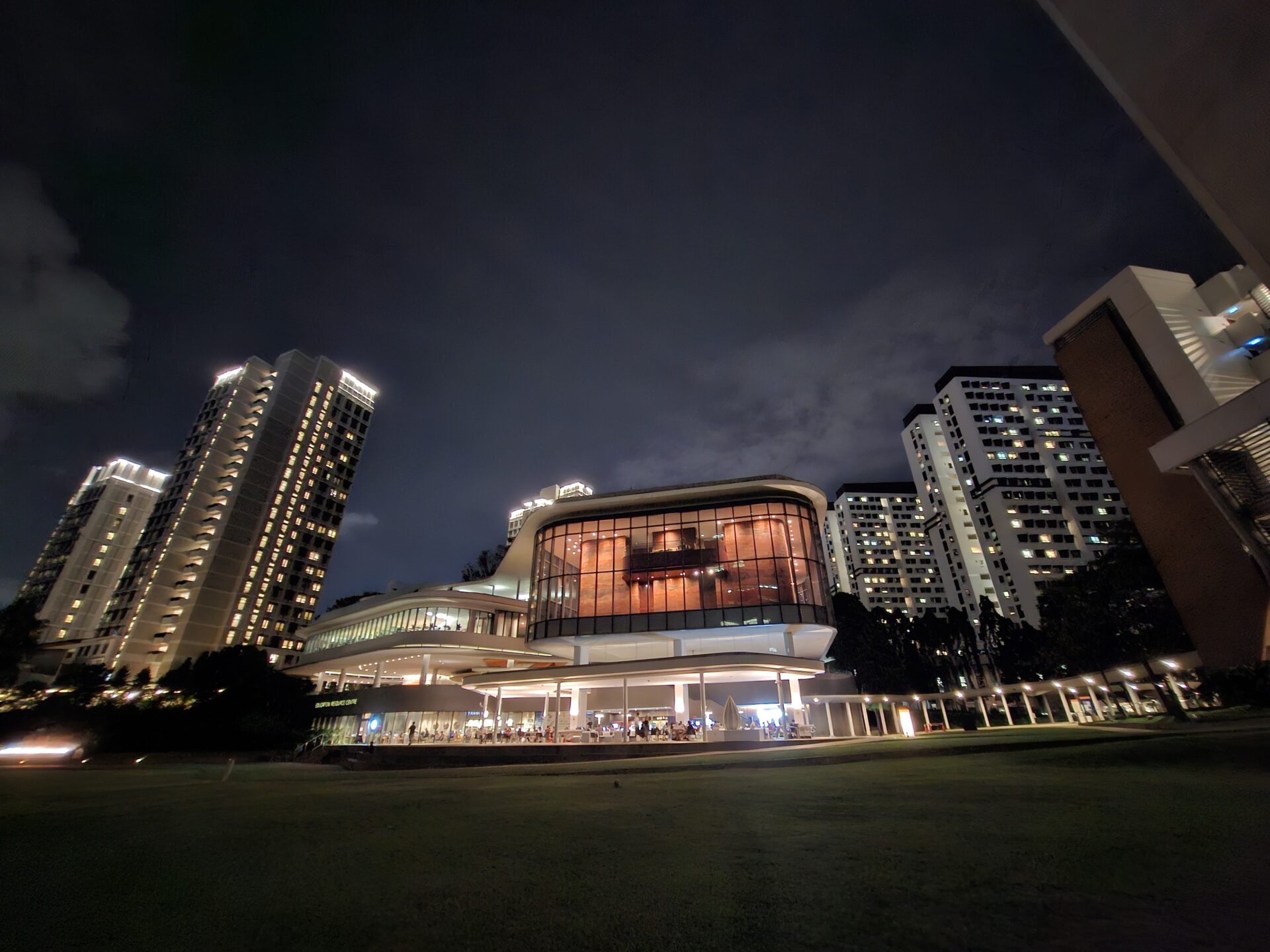
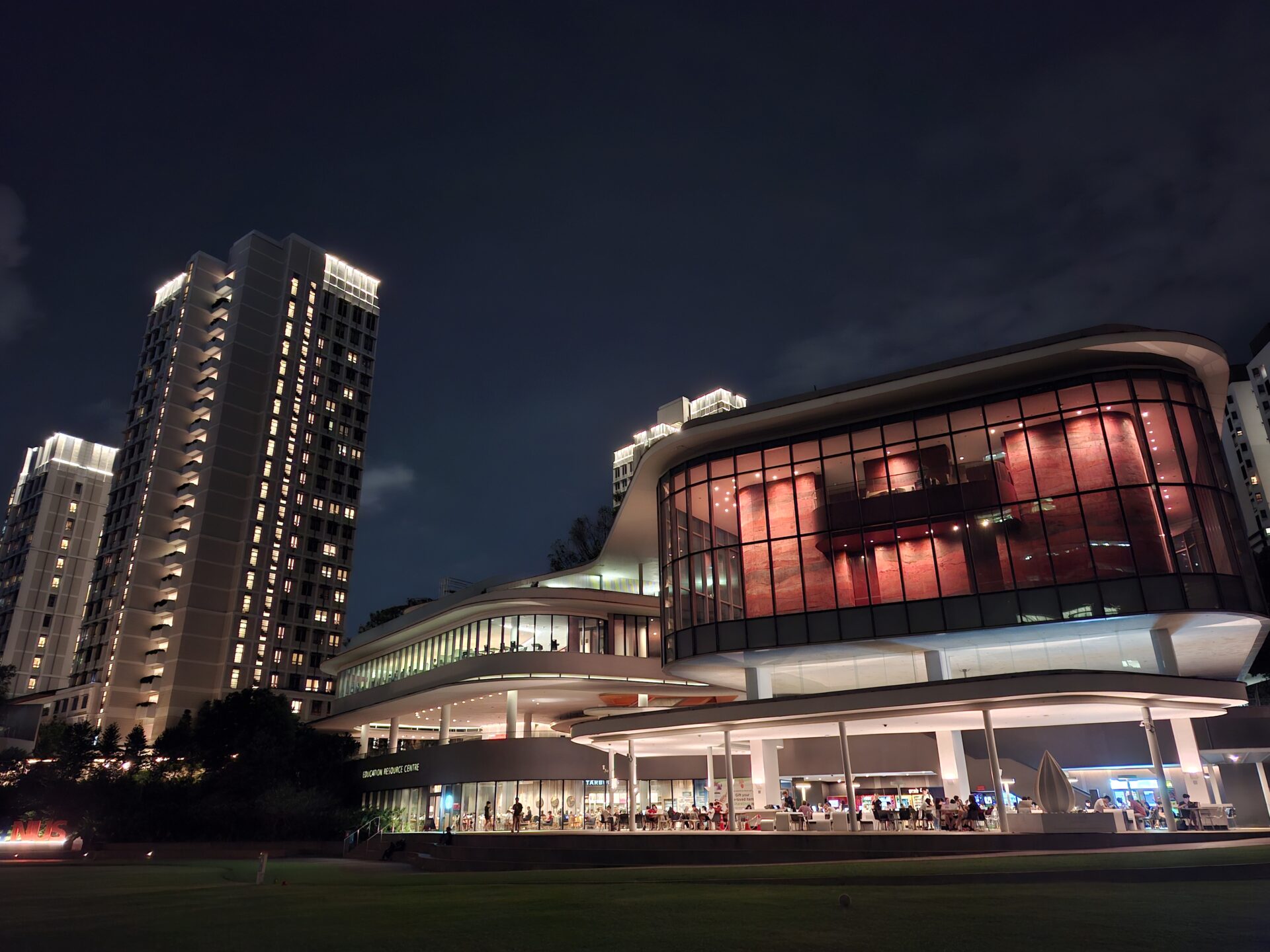

An ultrawide shot of the Education Resource Centre is brighter, but also causes some overexposure in the foreground of the picture, likely a result of the smaller sensor.
The wide shot is much more tasteful, with good detail, brightness and control at the ground floor seating area in the foreground. The red walls on the second floor looks nice, but the colour is actually off balance – it should not have been this red.
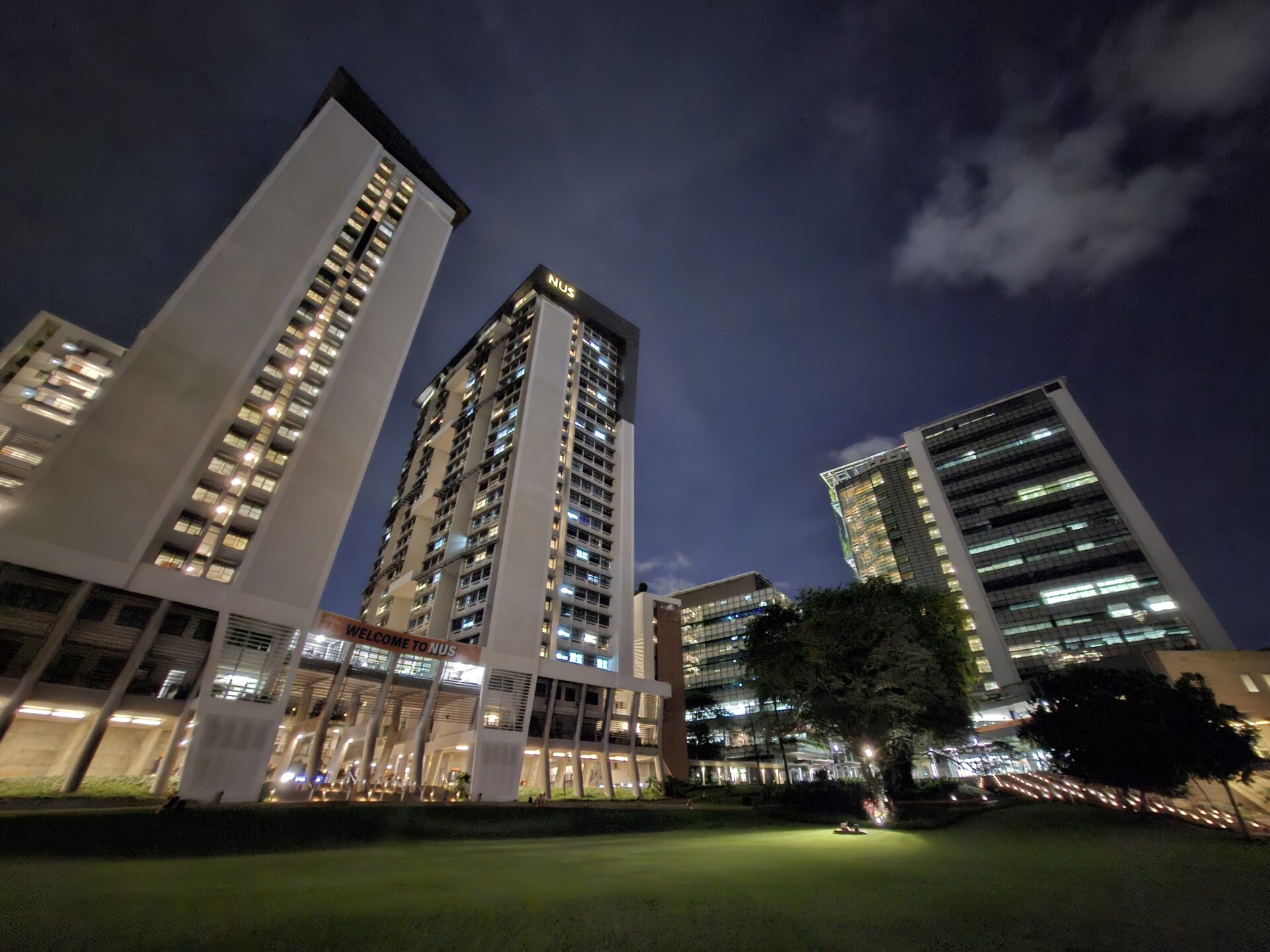
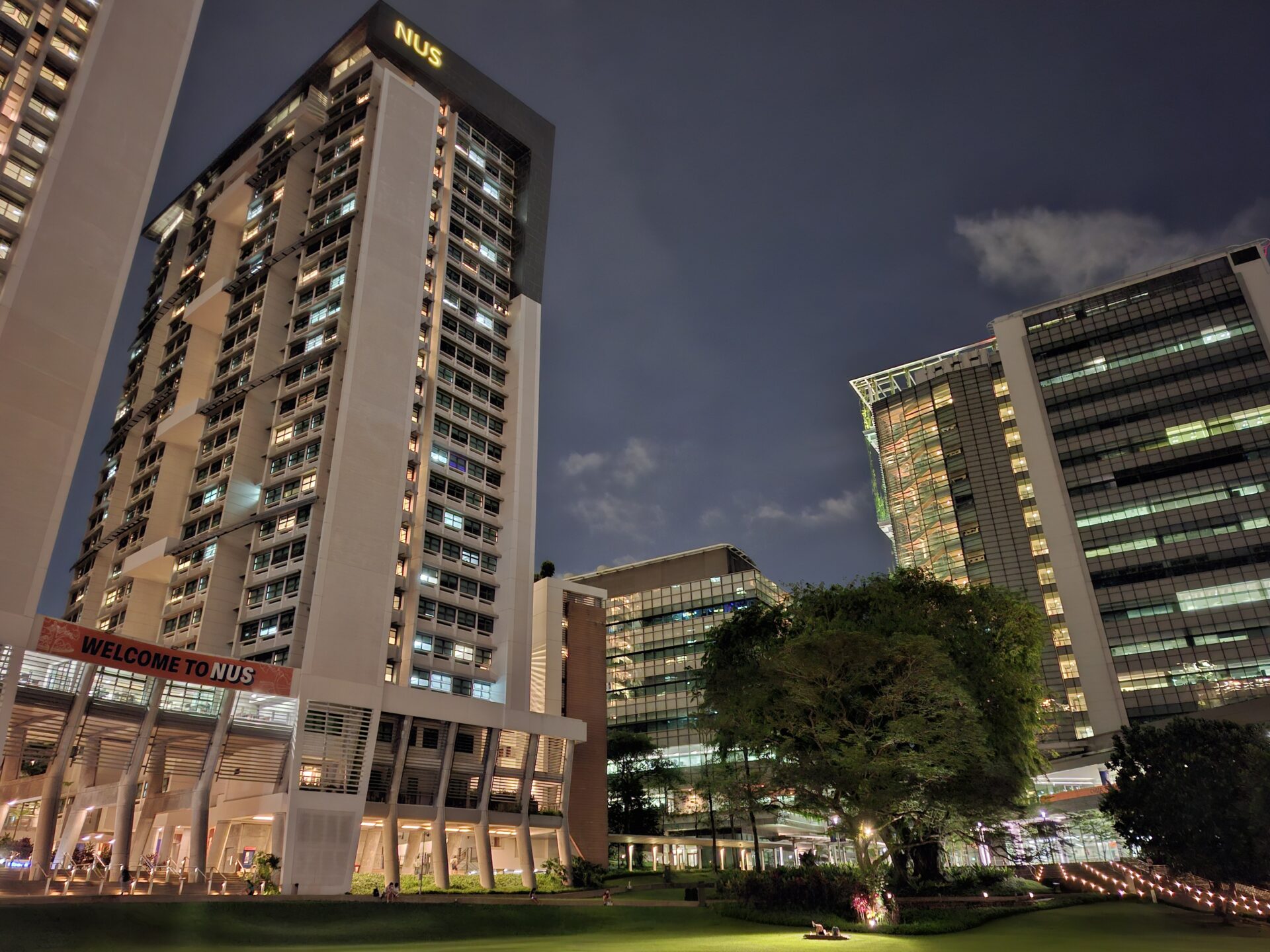
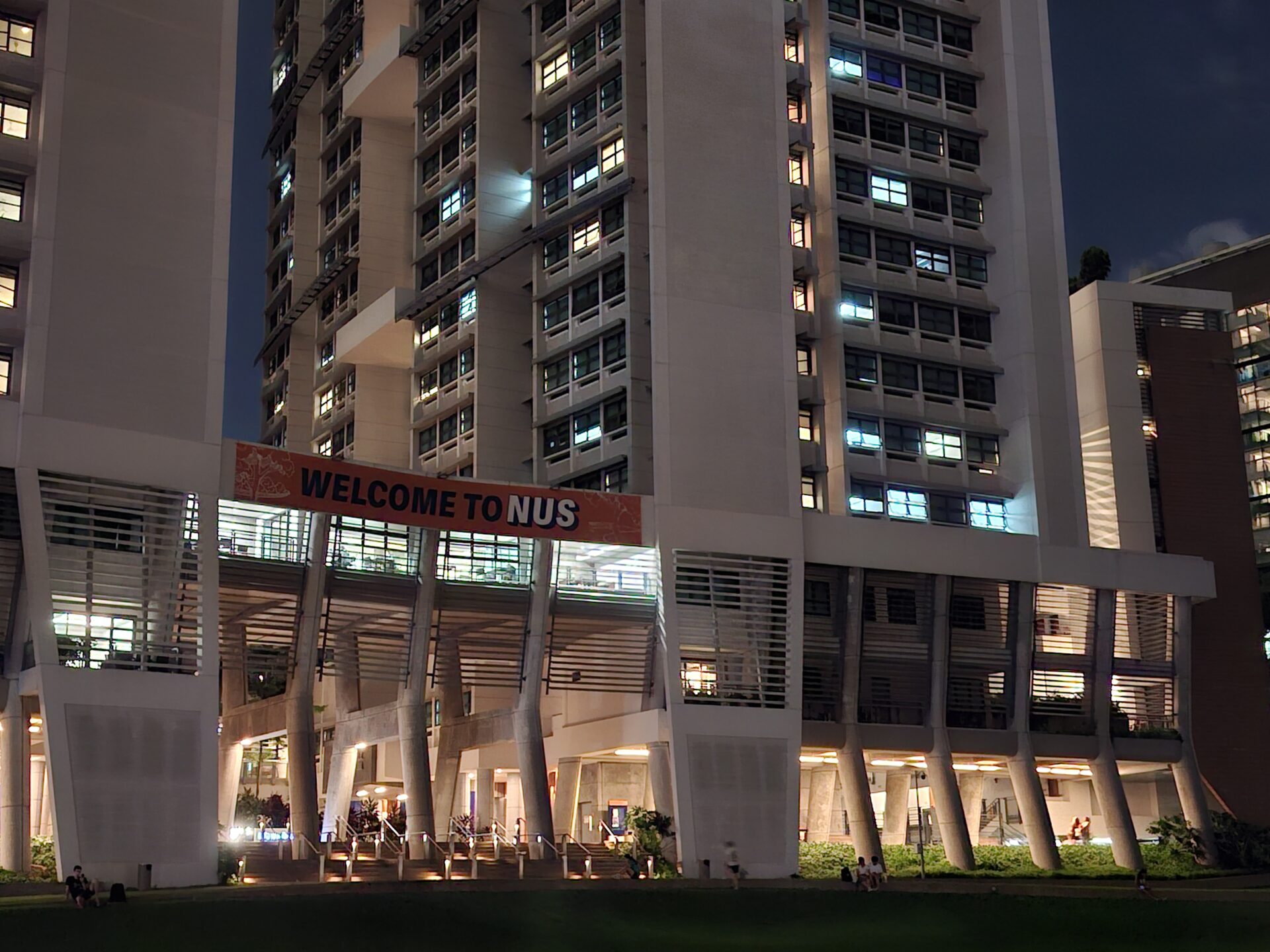
A shot of Town Green overlooking research labs and apartments reveal blurriness on the edges of the shot, and some softness in detail.
The wide shot is, as usual, much brighter and gives better detail to the shadowy parts of the shots. I can detect just that bit of jaggedness on the building on the right, though, exposing again limited detail.

I also gave the macro camera on the Galaxy A55 a try. It takes effort to position the phone about 3cm from the target to get a clear shot (there is no autofocus, it seems).
After all, it’s not easy to stay still enough, as the camera also lacks stabilisation. Still, this can be fun for getting shots that more expensive phones cannot get, and is way more useful than a monochrome camera, but that is that.
Conclusion
The Galaxy A55 is Samsung perfecting the midrange smartphone formula to be competitive with rivals. Water resistance, a quality HD resolution display, and very functional wide-ultrawide shooters help it remain a top choice among options at the same price bracket.
The ultrawide camera especially, is decently usable, even if less competent than the main shooter. Like many mid-priced phones, you can see things as either half empty or half full.
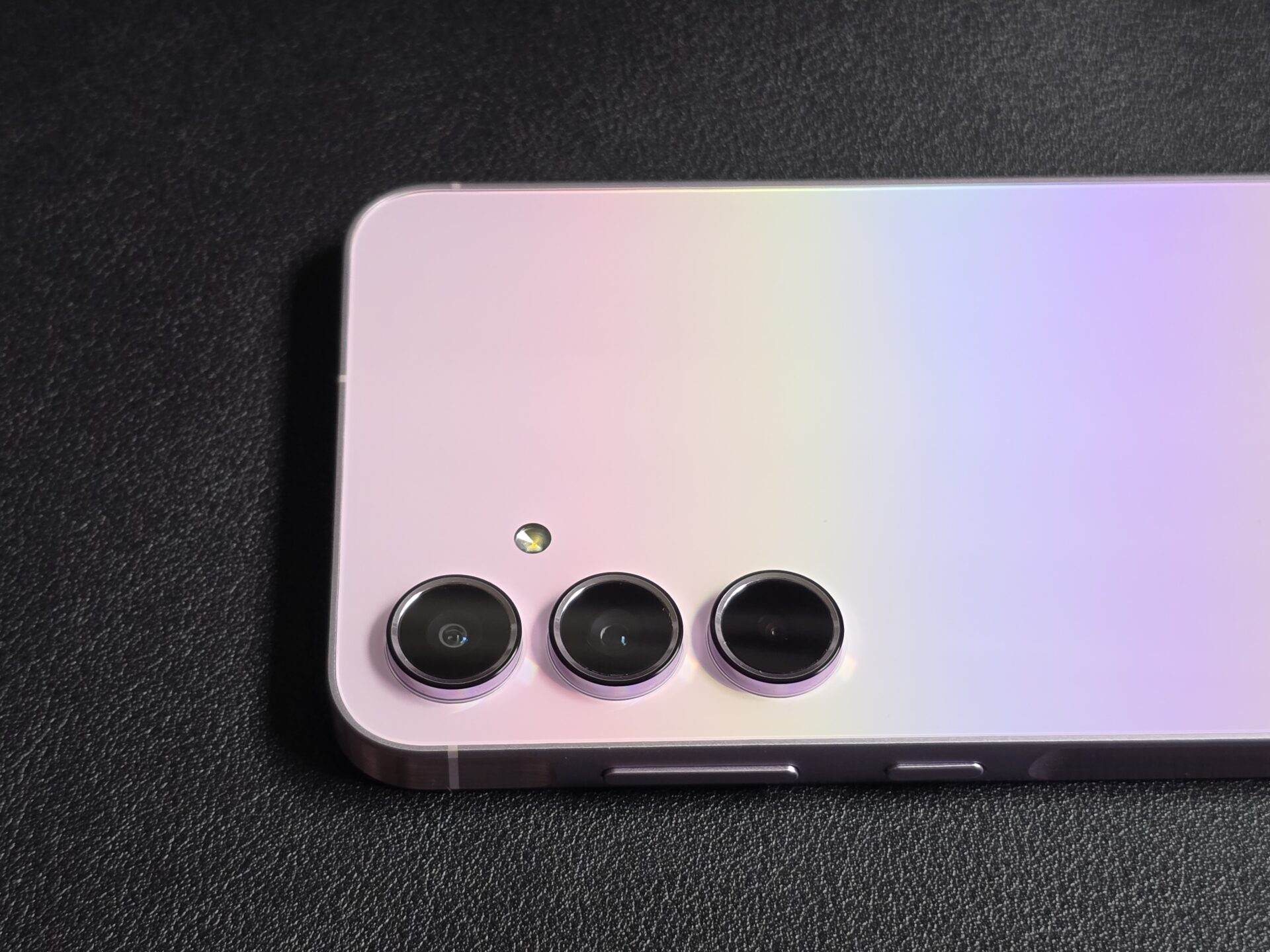
Speaking of that, I wish the Galaxy A55 charged faster as well. And while a glass-metal body is more premium, I prefer less gloss, and the part of the body where the side rail and glass front and back meet to not bite into flesh.
While the new Samsung mid-end phone is not the cheapest in its segment, it is a good choice for folks seeking a value-for-money phone that is not underpowered. Don’t forget that competitors gunning for a lower price often make at least one trade-off in terms of features.
It helps that the phone can be had for a lot less than its sticker price of S$618. If you can get deals that undercut that by a significant amount (think in excess of S$150), then the Galaxy A55 is well worth considering.
